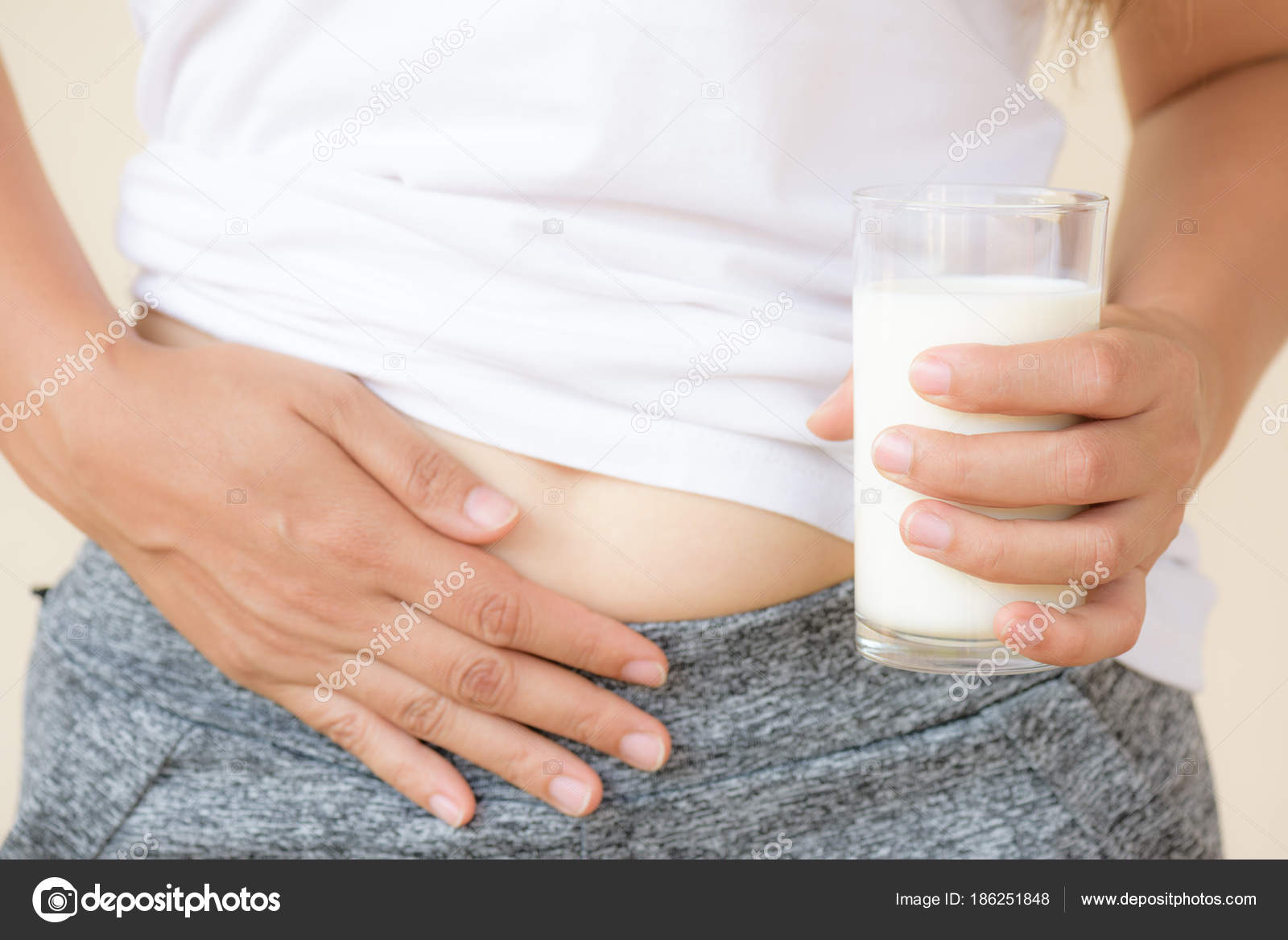Late in Life Lactose Intolerance: Can You Become Lactose Intolerant Later in Life?
Can you develop lactose intolerance later in life? Discover the common causes, symptoms, and management of lactose intolerance that can occur during adulthood.
Causes of Lactose Intolerance Later in Life
Lactose intolerance can develop at any age, even later in life. Your genetic makeup plays a significant role in determining whether you will experience lactose intolerance. The LCT gene instructs your body to produce the lactase enzyme, which is necessary for digesting lactose, the sugar found in milk. Over time, this gene can become less active, leading to a reduction in lactase production and the onset of lactose intolerance.
Certain ethnic groups are more prone to developing lactose intolerance in adulthood, including those of East Asian, West African, Arab, Jewish, Greek, and Italian descent. Additionally, an injury or damage to the small intestine, whether from an accident, surgery, radiation, infection, or disease, can also result in the inability to properly digest lactose.

Digestive Conditions Similar to Lactose Intolerance
It’s important to note that not all digestive discomfort is necessarily caused by lactose intolerance. As people age, they may become more sensitive to certain foods, leading to symptoms that mimic lactose intolerance, such as abdominal pain, gas, and diarrhea. Conditions like celiac disease, irritable bowel syndrome (IBS), and inflammatory bowel disease (IBD) can also produce similar symptoms.
One key difference between lactose intolerance and conditions like IBD is the presence of blood in the stool. While lactose intolerance does not typically cause blood in the stool, it is a possible symptom of IBD.
Diagnosing Lactose Intolerance
To determine if you have become lactose intolerant, the most straightforward approach is to eliminate milk and dairy products from your diet and monitor your symptoms. If your digestive issues persist despite cutting out lactose, it’s likely that the problem is not related to lactose intolerance.
For a more definitive diagnosis, a hydrogen breath test can be performed. This test involves drinking a beverage containing lactose and then measuring the hydrogen levels in your breath. If you are lactose intolerant, you will produce high levels of hydrogen, indicating that the lactose is not being properly digested.

Managing Lactose Intolerance
The degree of lactose intolerance can vary from person to person. Some individuals may be able to tolerate small amounts of milk or dairy products without experiencing significant symptoms, while others find that their symptoms fluctuate depending on the food consumed.
To manage lactose intolerance, consider the following strategies:
- Opt for hard cheeses, such as cheddar and Swiss, which typically contain less lactose than soft cheeses.
- Consume yogurt, which is often easier to digest than other dairy products.
- Take lactase supplements, such as Lactaid or Dairy Ease, before consuming dairy products.
- Explore lactose-free alternatives to milk and dairy products available in grocery stores.
If you are unable to consume any milk or dairy products, it’s important to talk to your doctor about the need for calcium and vitamin D supplements to prevent deficiencies.
Can Lactose Intolerance Develop Suddenly?
Yes, it is possible to suddenly become lactose intolerant later in life. This can happen due to various factors, such as an injury or damage to the small intestine, which can impair the body’s ability to produce enough lactase enzyme.

Some common causes of sudden-onset lactose intolerance include:
- Intestinal infections or illnesses
- Surgical procedures that affect the small intestine
- Radiation therapy targeting the abdominal area
- Certain medications or treatments that can impact the digestive system
If you experience sudden onset of digestive issues, such as bloating, gas, or diarrhea, after consuming dairy products, it’s important to consult with your healthcare provider to determine the underlying cause and the appropriate treatment plan.
Seeking Professional Guidance
Navigating the complexities of lactose intolerance, especially when it develops later in life, can be challenging. It’s crucial to work closely with your healthcare provider to accurately diagnose the condition and develop a management strategy that works best for your individual needs.
By understanding the causes, symptoms, and treatment options for lactose intolerance, you can take proactive steps to maintain your digestive health and enjoy a balanced, nutritious diet, even if you’ve become lactose intolerant later in life.

Can You Become Lactose Intolerant Later in Life?
It’s common to develop a lactase deficiency in adulthood. In fact, about 65 percent of the global population has a reduced ability to digest lactose after infancy, according to the National Institutes of Health (NIH).
Your genetic makeup has a lot to do with whether you’ll experience lactose intolerance. The body creates lactase when it’s instructed to do so by the LCT gene, and over time that gene can become less active. The result is lactose intolerance, which can begin after age 2 but may not manifest itself until adolescence or even adulthood, Dr. Grand says.
Some ethnic groups are more prone to developing lactose intolerance than others. According to the NIH, people of East Asian, West African, Arab, Jewish, Greek, and Italian descent are the most commonly affected by lactose intolerance in adulthood.
An injury to your small intestine — whether from an accident, surgery, radiation, infection, or disease — can also leave you unable to drink milk without symptoms, according to the National Institute of Diabetes and Digestive and Kidney Diseases (NIDDK).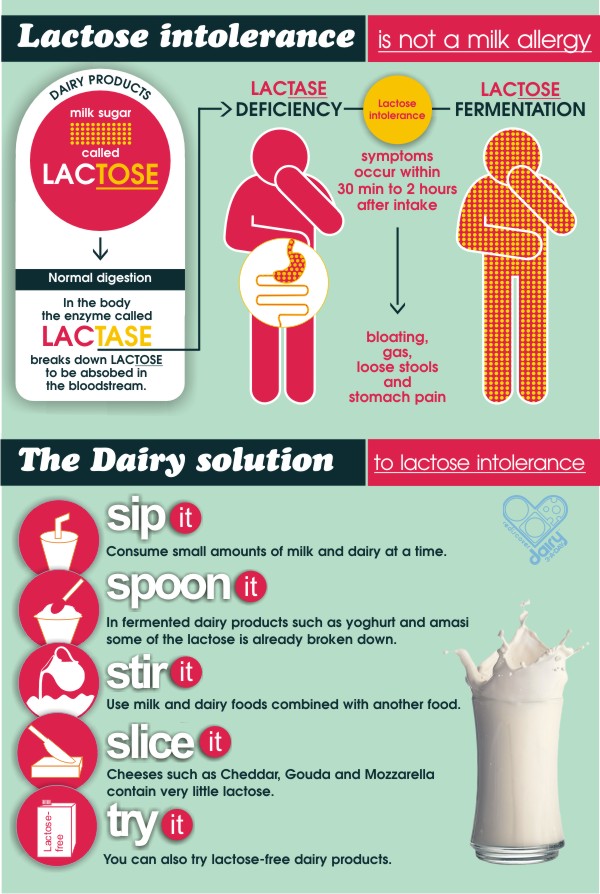 Drinking poorly treated or untreated water can also cause injury to your bowel that could result in lactose intolerance, Grand adds.
Drinking poorly treated or untreated water can also cause injury to your bowel that could result in lactose intolerance, Grand adds.
Digestive Problems Similar to Lactose Intolerance
But don’t give milk the cold shoulder just yet — digestive discomfort can be caused by other conditions, especially as you get older.
Some adults think they have lactose intolerance when they really have a different gastrointestinal issue, such as celiac disease, irritable bowel syndrome (IBS), or inflammatory bowel disease (IBD), Grand says. The symptoms of lactose intolerance and these diseases, such as abdominal pain, gas, and diarrhea, can be similar. One difference between IBD and lactose intolerance is the presence of blood in your stool.
You won’t see blood if you’re lactose intolerant, but it’s possible to see blood in your stool if you have IBD.
Normal aging may make you more sensitive to digestive disturbances, such as feeling bloated after meals, Grand says. And eating certain foods that irritate the lining of the intestines or stimulate the gut to contract more quickly, such as caffeine or spicy foods, can mimic lactose intolerance symptoms.![]()
How to Determine if You’re Lactose Intolerant
A simple way to determine whether you’ve become lactose intolerant is to completely eliminate milk and milk products from your diet and monitor how you feel in the following weeks.
“If you still have symptoms on a milk-restricted diet, you know it’s not the milk,” Grand says.
A breath test can provide a more definitive diagnosis, according to the NIDDK. For this test, you’ll drink a beverage with lactose and then breathe into a balloon-like container so that your hydrogen level can be measured. Under normal conditions, after consuming dairy, people will have only a small amount of hydrogen in their breath. If you’re lactose intolerant, you’ll produce high levels of hydrogen.
How to Manage Different Degrees of Lactose Intolerance
Some people who are lactose intolerant can still consume small amounts of milk or milk products and not feel ill, while others find their symptoms wax and wane from time to time and from food to food, Dr. Farhadi says.
Farhadi says.
Hard cheeses, such as cheddar and Swiss, contain less lactose than soft cheeses. Yogurt is also easier to digest than other forms of dairy.
Taking lactase pills or drops, such as Lactaid or Dairy Ease, before you eat can also help manage symptoms. You can also look for lactose-free alternatives to milk and milk products in your grocery store.
If you’re lactose intolerant and can’t consume any milk or milk products, Grand notes that it’s important to talk with your doctor about whether or not you should take calcium and vitamin D supplements in order to avoid developing deficiencies.
Can You Suddenly Become Lactose Intolerant?: Gotham Gastroenterology: Gastroenterology
Lactose intolerance causes people to have trouble properly digesting the sugar that is found in milk, which is called lactose. Lactose intolerance can develop at any time.
Causes of Lactose Intolerance
When you are lactose intolerant, your small intestine is not able to make enough lactase that is needed for digesting lactose. In normal conditions, the lactase enzyme helps turn lactose into sugars that enter your bloodstream. If this doesn’t happen, then lactose enters your colon instead of your bloodstream. Bacteria in your colon react to lactose, which results in symptoms of this condition.
In normal conditions, the lactase enzyme helps turn lactose into sugars that enter your bloodstream. If this doesn’t happen, then lactose enters your colon instead of your bloodstream. Bacteria in your colon react to lactose, which results in symptoms of this condition.
You can have different kinds of lactose intolerance. Primary lactose intolerance is the most common one. While people with this condition typically have enough lactase during childhood, this can change in adulthood. As an adult with this condition, your body stops making enough lactase to handle milk products. Secondary lactose intolerance that occurs due to other medical conditions and congenital lactose intolerance are the other types.
Symptoms of Lactose Intolerance
You might experience symptoms of this condition roughly 30 minutes or a couple of hours after you have milk or other products containing lactose. These symptoms include the following:
- Bloating
- Gas
- Diarrhea
- Nausea with or without vomiting
- Abdominal cramping
You should see your doctor if you have been getting symptoms of lactose intolerance.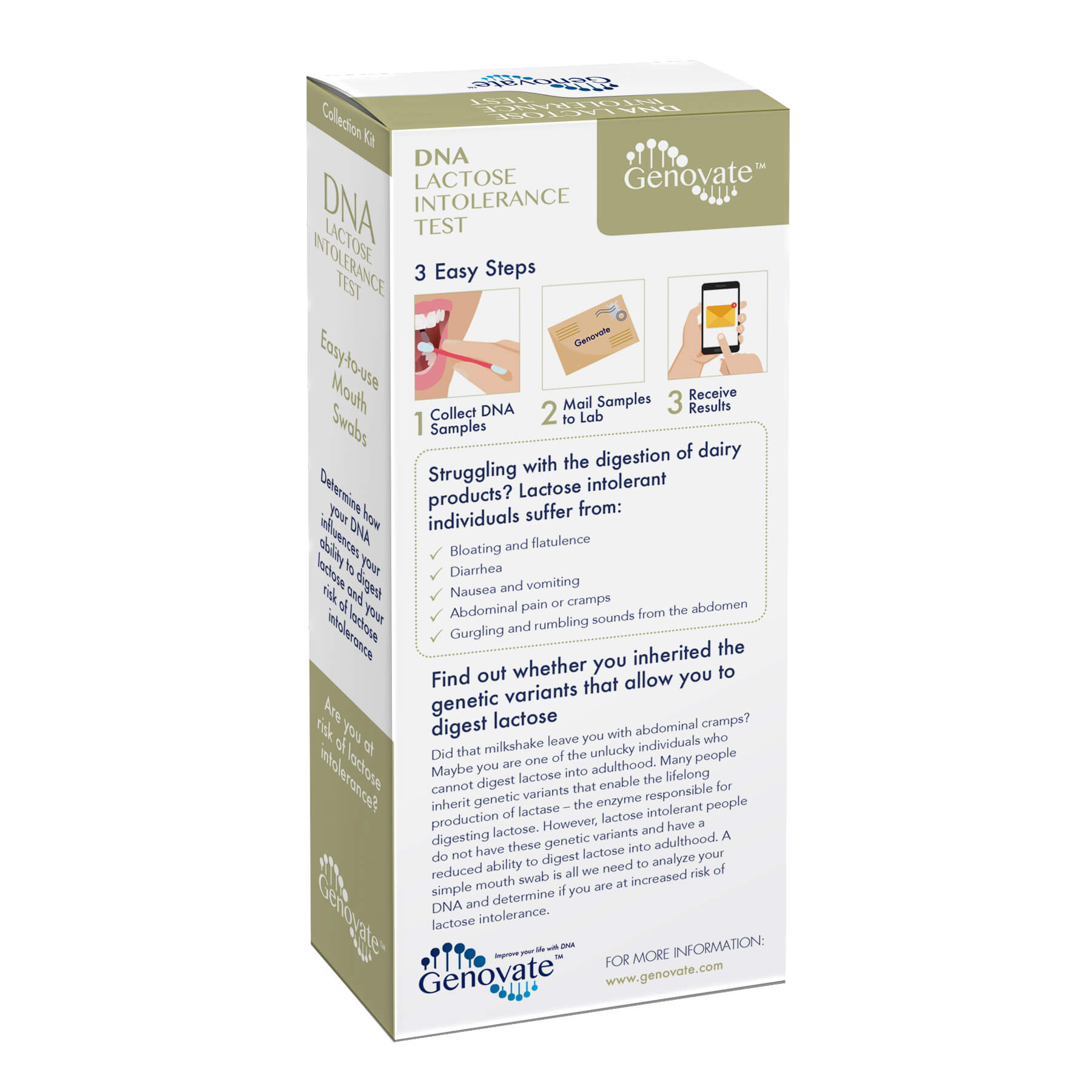 This can help ensure that you manage this condition so that your body gets enough calcium.
This can help ensure that you manage this condition so that your body gets enough calcium.
Treatment for Lactose Intolerance
There are no medical treatments that can correct lactose intolerance or increase your lactase levels. Instead, your doctor can recommend making changes to your diet that can help reduce symptoms. This might mean only having small amounts of milk and dairy products at a time or switching to products that have lower levels of lactose. There are also powders you can add to milk to help break down lactose so that you don’t have to avoid drinking it altogether.
Your doctor might also recommend increasing certain foods in your diet to ensure that you get plenty of calcium, such as broccoli, spinach, milk substitutes, and calcium-fortified products. You’ll also need to make sure that you have eggs and other foods that are high in vitamin D if you are drinking lower amounts of vitamin D fortified milk. Keep in mind that dairy products vary in the amounts of lactose they have. While some foods might bother you, others might not cause any symptoms.
While some foods might bother you, others might not cause any symptoms.
If you are dealing symptoms of lactose intolerance, contact Gotham Gastroenterology for an appointment. Our specialists can offer a special diet plan tailored to your needs for lactose intolerance.
Are You a Well Being?
A lot of things change as we get older, unfortunately, but if you’ve noticed that dairy products are not playing as nicely with your digestive system as they used to, age might not be the first thing that comes to mind.
Lactose intolerance is defined as the inability to digest lactose, the sugar found in milk, causing gastrointestinal disturbances. The National Institutes of Health (NIH) report that about 65 percent of the global population has a reduced ability to digest lactose after infancy. Since the United States Department of Agriculture (USDA) estimates that the average American consumed 646 pounds of dairy products in 2016, with milk accounting for nearly a quarter of that total, that can be some seriously saddening news for many.
So, what’s the culprit that causes our body to become lactose intolerant as we get older? Gaurav Arora, M.D., gastroenterologist and physician on the medical staffs at Texas Health Denton and Denton Digestive Care, a Texas Health Physicians Group practice, says it’s an enzyme called lactase, or lack thereof. Lactase breaks down lactose into simpler forms called glucose and galactose. These forms are a lot less harsh on our digestive system and can be easily absorbed into the bloodstream. But in those who have reduced or no lactase enzymes, lactose doesn’t break down before entering the colon. Once it hits the colon, bacteria break down the lactose and create excess gas and fluid.
Even though all adults experience a decline in lactase enzymes as they age, genetic makeup has a lot to do with how quickly the decline proceeds. Some ethnic groups are more prone than others. The most common ethnicities reported by the NIH to experience lactose intolerance in adulthood are people of Arab, East Asian, Greek, Italian, Jewish and West African descent.
An injury to your small intestine can also play a powerful role in lactose intolerance. This includes surgery, radiation, infection or disease. Although less likely in developed countries like the United States, drinking poorly treated or untreated water can also cause injury to your small intestine that could result in intolerance.
Since digestive disturbances caused by a lactose intolerance can mimic symptoms of more serious gastrointestinal issues, like Irritable Bowel Syndrome (IBS) or Irritable Bowel Disorder (IBS), Arora says it’s important to know the difference.
“If someone has unintentional weight loss, persistent or severe abdominal pain, nausea or vomiting, persistent or severe diarrhea, or blood in the stool, these may be signs of something more serious than just a food or dairy intolerance,” he says. “IBS is not a serious disorder but can severely impact the quality of life and may be initially hard to distinguish from a food or dairy intolerance.”
Common symptoms of a dairy intolerance include:
- Diarrhea or loose stools (more common in children)
- Nausea, and sometimes, vomiting
- Abdominal cramps in the lower belly
- Bloating
- Gas
- Gurgling or rumbling sounds in the lower belly
It’s important to keep in mind that symptoms arise mostly after consuming dairy products. If you exhibit symptoms listed above without having consumed dairy, keep track of your symptoms and your dairy intake and make an appointment with your doctor if the symptoms persist despite your lack of dairy consumption.
If you exhibit symptoms listed above without having consumed dairy, keep track of your symptoms and your dairy intake and make an appointment with your doctor if the symptoms persist despite your lack of dairy consumption.
If you suspect that you or a loved one might have a lactose intolerance, Arora says you should first try to avoid all milk and dairy products for one week. If symptoms lessen or go away, then dairy is most likely the culprit for why you’ve been feeling uncomfortable.
“Make sure to read the labels on everything you eat,” Arora says. “Milk or lactose is sometimes added to foods you might not suspect, such as cereal, instant soups, and salad dressings. Check the ingredient list of foods for anything that might suggest lactose. Look for these words: ‘milk,’ ‘milk byproducts,’ ‘dry milk powder,’ and ‘dry milk solids.’ Also look for ‘lactose,’ or ‘whey’.”
After a period of dietary restriction, Arora says working with your doctor to test your limits can help you reintroduce some dairy products back into your diet.
“Lactose may be better tolerated if consumed daily rather than intermittently,” he explains. “The highest concentration of lactose per serving is found in milk and ice cream, but ice cream is typically better tolerated than milk because of the high-fat content that slows its emptying by the stomach.”
The cheese lovers out there can rejoice a little bit, as well, since Arora adds that cheeses are much better tolerated than milk in many cases.
If you suspect that you or a loved one might be suffering from an undiagnosed lactose intolerance, Arora says it’s always best to discuss your concerns with your doctor who can help prescribe medications or supplements to manage symptoms or refer you to a specialist like a gastroenterologist to help you manage the disease.
Finding a specialist doesn’t have to be complicated! Use Texas Health Resource’s “Find-a-Physician” tool to find a physician near you that accepts your insurance and fits your needs, or call 1-877-THR-WELL (1-877-847-9355).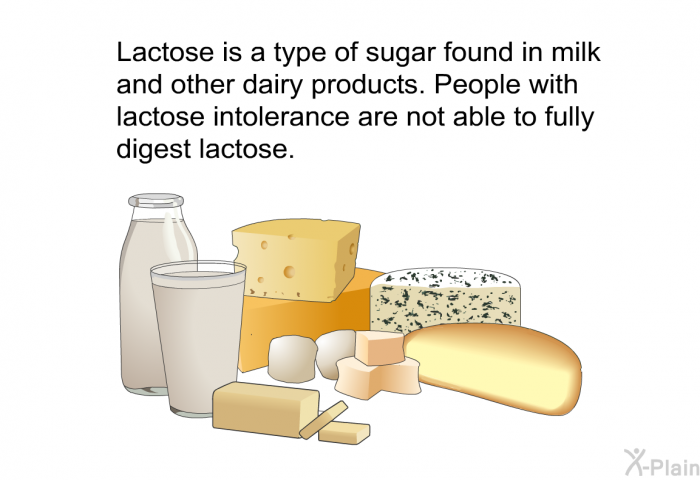
Lactose intolerance – NHS
Lactose intolerance is a common digestive problem where the body is unable to digest lactose, a type of sugar mainly found in milk and dairy products.
Symptoms of lactose intolerance
Symptoms of lactose intolerance usually develop within a few hours of consuming food or drink that contains lactose.
They may include:
- farting
- diarrhoea
- a bloated stomach
- stomach cramps and pains
- stomach rumbling
- feeling sick
The severity of your symptoms and when they appear depends on the amount of lactose you have consumed.
Some people may still be able to drink a small glass of milk without triggering any symptoms, while others may not even be able to have milk in their tea or coffee.
When to seek medical advice
The symptoms of lactose intolerance can be similar to several other conditions, so it’s important to see your GP for a diagnosis before removing milk and dairy products from your diet.
For example, the symptoms above can also be caused by:
- irritable bowel syndrome (IBS) – a long-term disorder that affects the digestive system
- milk protein intolerance – an adverse reaction to the protein in milk from cows (not the same as a milk allergy)
If your GP thinks you have lactose intolerance, they may suggest avoiding foods and drinks containing lactose for 2 weeks to see if your symptoms improve.
What causes lactose intolerance?
The body digests lactose using a substance called lactase. This breaks down lactose into 2 sugars called glucose and galactose, which can be easily absorbed into the bloodstream.
People with lactose intolerance do not produce enough lactase, so lactose stays in the digestive system, where it’s fermented by bacteria.
This leads to the production of various gases, which cause the symptoms associated with lactose intolerance.
Depending on the underlying reason why the body’s not producing enough lactase, lactose intolerance may be temporary or permanent.
Most cases that develop in adults are inherited and tend to be lifelong, but cases in young children are often caused by an infection in the digestive system and may only last for a few weeks.
Who’s affected
In the UK, lactose intolerance is more common in people of Asian or African-Caribbean descent.
Lactose intolerance can develop at any age. Many cases first develop in people aged 20 to 40, although babies and young children can also be affected.
Is it an allergy?
Lactose intolerance is not the same as a milk or dairy allergy. Food allergies are caused by your immune system reacting to a certain type of food. This causes symptoms such as a rash, wheezing and itching.
If you’re allergic to something, even a tiny particle can be enough to trigger a reaction, while most people with lactose intolerance can still consume small amounts of lactose without experiencing any problems, although this varies from person to person.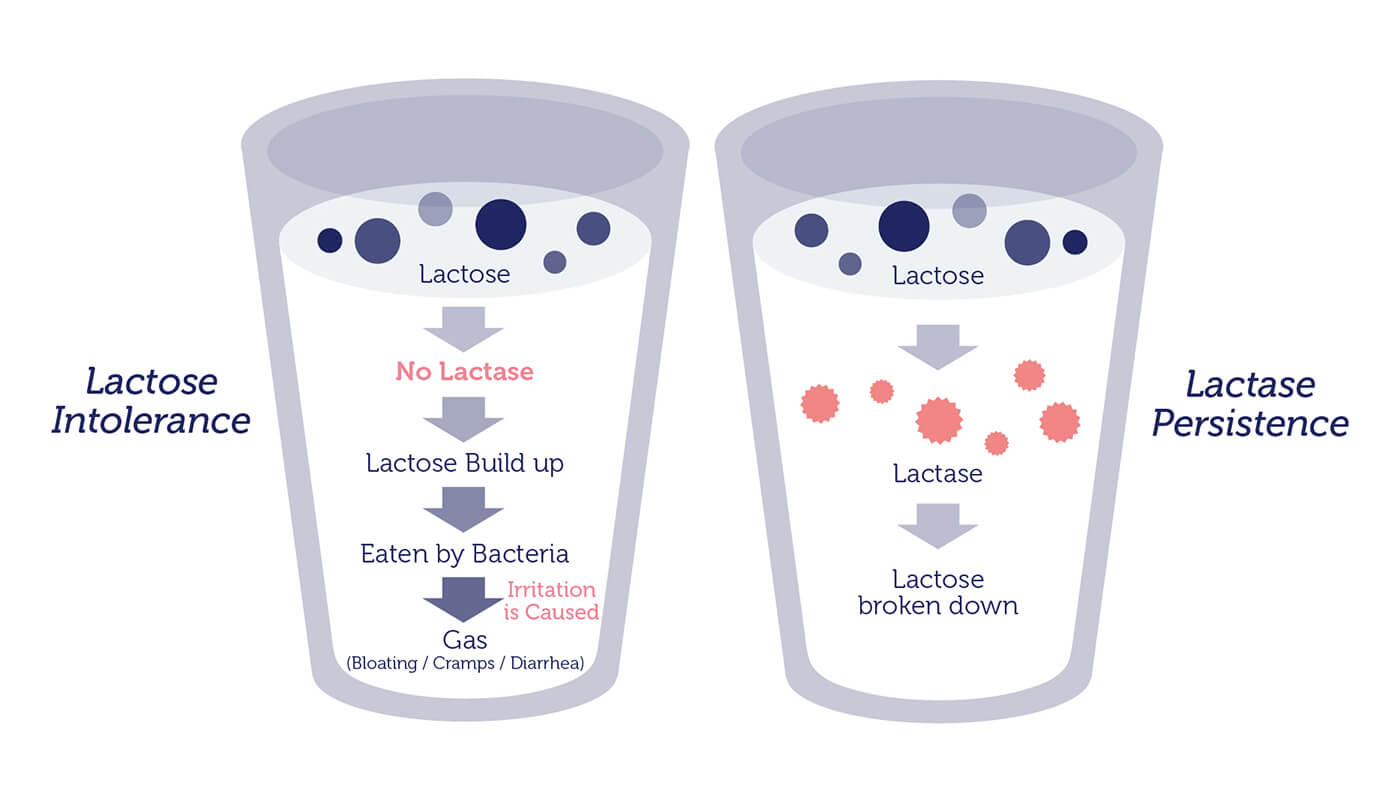
Treating lactose intolerance
There’s no cure for lactose intolerance, but cutting down on food and drink containing lactose usually helps to control the symptoms.
Lactose-free products include:
- lactose-free cows’ milk
- soya milks, yoghurts and some cheeses
- rice, oat, almond, hazelnut, coconut, quinoa and potato milks
Your GP may also recommend calcium and vitamin D supplements.
You may be advised to take lactase substitutes, which are drops or tablets you can take with your meals or drinks to improve your digestion of lactose.
Complications of lactose intolerance
Milk and other dairy products contain calcium, protein and vitamins, such as A, B12 and D.
Lactose also helps your body absorb a number of other minerals, such as magnesium and zinc.
These vitamins and minerals are important for the development of strong, healthy bones.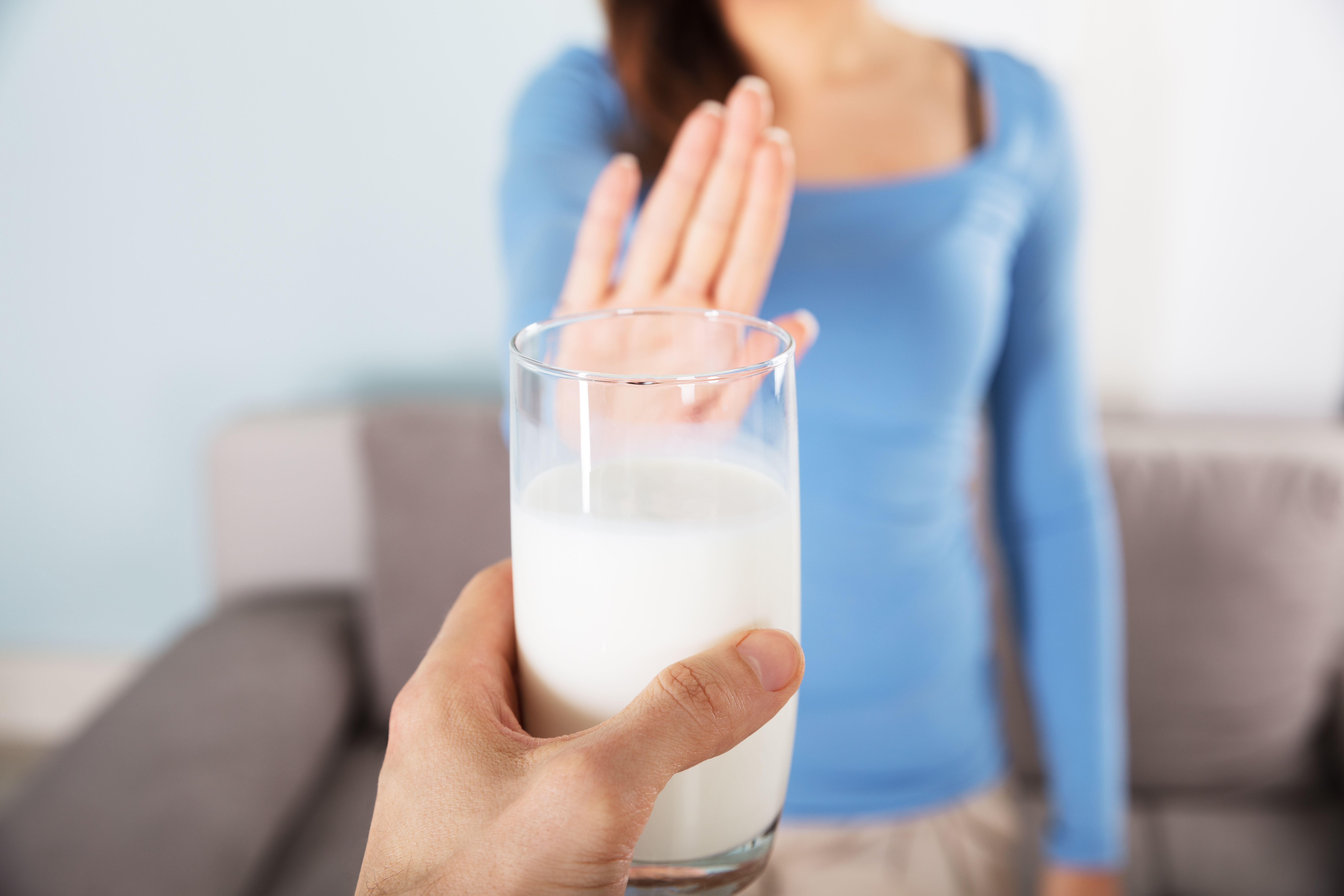
If you’re lactose intolerant, getting the right amount of important vitamins and minerals can prove difficult.
This may lead to unhealthy weight loss and put you at increased risk of developing the following conditions:
- osteopenia – where you have a very low bone-mineral density; left untreated, it can develop into osteoporosis
- osteoporosis – where your bones become thin and weak, and your risk of breaking a bone is increased
- malnutrition – when the food you eat does not give you the nutrients essential for a healthy functioning body; this means wounds can take longer to heal and you may start to feel tired or depressed
If you’re concerned that dietary restrictions are putting you at risk of complications, you may find it helpful to consult a dietitian.
They can advise you on your diet and whether you require food supplements.
Your GP should be able to refer you to an NHS dietitian free of charge. Or you can contact a private dietitian.
The British Dietetic Association has information on how to find a private dietitian.
Page last reviewed: 25 February 2019
Next review due: 25 February 2022
Lactose intolerance – Better Health Channel
Milk and other dairy products contain a sugar or carbohydrate called lactose. Normally, the body breaks down lactose into its simpler components with the help of the enzyme lactase. Most mammals stop producing lactase when they are weaned. Most people of Western European descent, however, continue to produce it throughout life.
Without enough lactase, a person can have digestive problems like abdominal pain and diarrhoea when they consume foods containing lactose. This is known as lactose intolerance or lactase deficiency.
It is rare for Caucasians to develop lactose intolerance. However, a form of lactose intolerance that develops after about five years of age is quite common (and normal) among people from Asia, Africa, the Middle East and some Mediterranean countries, as well as among Aboriginal Australians. Up to five per cent of Caucasians and up to 75 per cent of non-Caucasians living in Australia are lactose intolerant.
Up to five per cent of Caucasians and up to 75 per cent of non-Caucasians living in Australia are lactose intolerant.
Babies of all populations can tolerate lactose. Many Australian babies are unnecessarily weaned because their irritability is wrongly assumed to be lactose intolerance. In reality, the severe form of this condition – known as primary or congenital lactose intolerance (where the infant does not produce lactase from birth) – is very rare.
Secondary lactose intolerance is more common. This can occur temporarily after a bout of gastroenteritis, for example, but often improves after several weeks as the lining of the gut heals.
Symptoms of lactose intolerance
Symptoms of lactose intolerance include:
- abdominal pain
- abdominal swelling (bloating)
- flatulence (excessive wind)
- diarrhoea.
If you are experiencing these symptoms and you are concerned, talk to your doctor.
It is important not to eliminate dairy foods completely from your diet if lactose intolerance is suspected, as dairy foods are rich sources of nutrients. Some dairy products (such as hard and mature cheeses) contain no lactose, and others (such as cream, butter, cottage cheese and ricotta) contain very little. Many people with lactose intolerance can tolerate small amounts of lactose with minimal symptoms.
Some dairy products (such as hard and mature cheeses) contain no lactose, and others (such as cream, butter, cottage cheese and ricotta) contain very little. Many people with lactose intolerance can tolerate small amounts of lactose with minimal symptoms.
Undigested milk sugars
The enzyme lactase breaks down milk sugar (lactose). Lactase enzymes are found in the lining of the small intestine. They change the milk sugar into absorbable compounds – glucose and galactose.
If your body does not produce enough lactase, lactose is not digested and absorbed in the small intestine in the usual way. Instead, it continues to travel along the digestive tract to the large intestine, where bacteria partially break it down into acids and gases. This fermentation process causes excessive wind, bloating and associated pain.
Any undigested lactose continues along the intestinal tract. This lactose attracts water molecules. So rather than being absorbed into the bloodstream, water remains in the faecal matter (poo) and watery poo (diarrhoea) is the result.
Causes of lactose intolerance
Lactose intolerance is largely genetically determined – where your genetic make-up causes you to have less lactase than usual. Some other causes include:
- gastroenteritis – this can strip the intestines of lactase for a few weeks
- parasitic infection – this can temporarily reduce lactase levels
- coeliac disease – this also damages the gut lining.
Lactose intolerance in babies
There are two types of lactose intolerance in babies: primary and secondary lactose intolerance.
Primary lactose intolerance (or congenital lactose intolerance) is a very rare genetic condition. Babies with this condition are born without any lactase enzymes at all. They cannot process or absorb lactose. They fail to thrive from birth, and have severe diarrhoea from the day they are born. They are diagnosed straight after birth. Babies with this condition must be fed feeds free of lactose.
Secondary lactose intolerance occurs when the gut lining (where lactase is produced) is damaged. This can occur due to a bout of gastroenteritis or due to chronic irritation (such as that due to food allergy or food intolerance), among other reasons.
Breastfed babies experiencing symptoms of lactose intolerance but who do not have primary lactose intolerance should continue to breastfeed. Once the source of the damage is removed, their gut will heal and produce lactase again.
There is no need for women who are breastfeeding to reduce or cut out dairy foods if their baby is showing signs of lactose intolerance. This is because the amount of lactose in breastmilk is not affected by the mother’s diet. Regardless of what they eat or drink, the level of lactose in breastmilk stays at around seven per cent. An exception may be if secondary lactose intolerance is being caused by allergy or intolerance to cows’ milk protein, where cutting out dairy foods will prevent ongoing damage to the gut lining.
For formula-fed babies, there is no benefit in using lactose-free formula unless the baby is losing weight. Lactase drops are available from pharmacies, but are not always helpful.
If your baby is showing signs of lactose intolerance, such as excessive bowel motions, wind in the bowel, and pain, have your baby checked by your GP for any medical problems such as infection. Check that your baby is gaining weight and growing normally.
If all this is okay, speak to an Australian Breastfeeding Association counsellor, lactation consultant or child health nurse, to check if your baby has a lactose overload. This is common in the early weeks and can happen when a baby is taking in more milk than they can digest easily. Breastfeeding advice is helpful in this situation.
If the situation is more complex, such as if your baby has poor weight gain or blood in their bowel motions, then this needs further investigation. See your GP.
Vomiting is not a symptom of lactose intolerance in babies.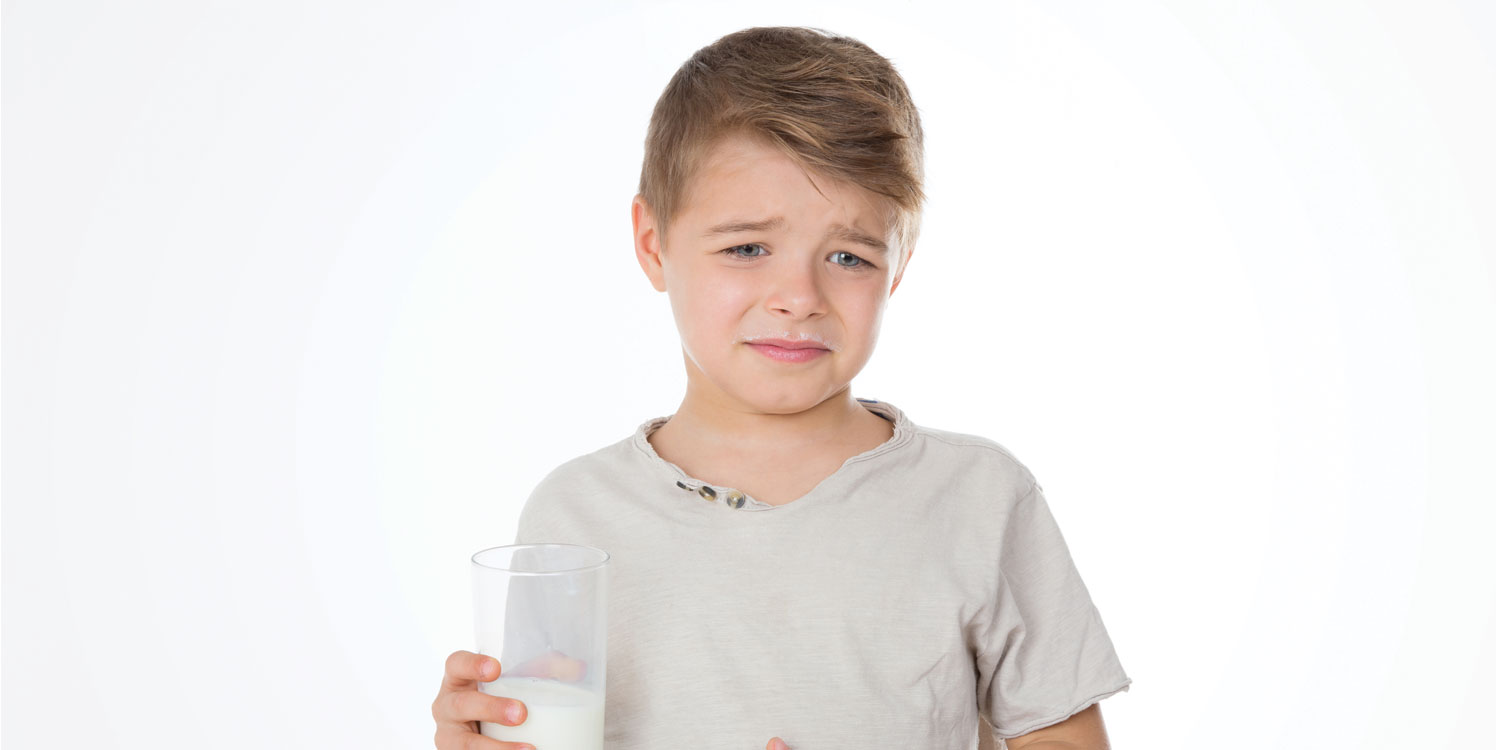 Note that vomiting in the early weeks of life is quite normal, as long as the baby is not distressed by it and they are keeping down sufficient milk to gain weight and grow normally. If weight gains are normal and there are normal amounts of urine and bowel motions in the baby’s nappies, then the vomiting is not a medical problem.
Note that vomiting in the early weeks of life is quite normal, as long as the baby is not distressed by it and they are keeping down sufficient milk to gain weight and grow normally. If weight gains are normal and there are normal amounts of urine and bowel motions in the baby’s nappies, then the vomiting is not a medical problem.
If your baby is vomiting excessively and unsettled, this could be due to an allergy to cows’ milk protein or another food in your diet if you are breastfeeding, or another health condition, and should be assessed by a doctor.
Diagnosis of lactose intolerance
Various methods may be used to diagnose lactose intolerance, including:
- hydrogen breath test – this tests the amount of hydrogen that is breathed out. When lactose is fermented by bacteria in the bowel, instead of being converted by lactase, more hydrogen is produced
- elimination diet – this involves removing foods that contain lactose to see if the symptoms improve.
 If the symptoms reappear once the foods are reintroduced, then lactose intolerance is most likely the cause.
If the symptoms reappear once the foods are reintroduced, then lactose intolerance is most likely the cause.
Another cheap and simple ‘test’ is to compare whether the person can tolerate lactose-free milk rather than ordinary milk.
Management of lactose intolerance
Most people with lactose intolerance can handle small amounts of lactose, such as a glass of milk, which contains 8–10 grams of lactose.
Some helpful tips include:
- Don’t give up milk products entirely. They are an important source of nutrients, especially calcium.
- Hard and matured cheeses such as cheddar, Edam, Swiss, mozzarella, brie and fetta contain no lactose and are tolerated by people with lactose intolerance.
- Similarly, butter and cream contain very low levels of lactose and are well tolerated.
- Yoghurt is usually well tolerated because the lactose content decreases each day as the bacteria use lactose for energy.
- Fresh cheeses such as cottage cheese and ricotta have very low levels of lactose and are usually well tolerated in small amounts.

- Drink milk in moderate quantities. Most people with this condition can tolerate 240 ml of milk per day, but you need to work out your own tolerance level. You can buy milk that has had the lactose broken down, which makes it lactose free.
- Drink full-fat milk because the fats slow the journey of the milk through the intestines and allow the lactase enzymes more time to break down the sugars.
- Avoid low-fat or non-fat milks – they travel quickly through the gut and tend to cause symptoms in lactose intolerant people. Also, many low-fat milk products may contain skim milk powder, which provides a higher dose of lactose.
- Eat foods that contain lactose in combination with other foods or spread them out over the day, rather than eating a large amount at once.
- Soy foods such as soy milk and yoghurt are lactose free, a good source of calcium and a good substitute for milk or milk products.
Hidden lactose
Foods that may contain hidden lactose include:
- biscuits and cakes (if milk or milk solids are added)
- processed breakfast cereals
- cheese sauce
- cream soups
- custard
- milk chocolate
- pancakes and pikelets
- scrambled eggs
- quiche
- muesli bars
- some breads and margarine (containing milk).

Checking food labels for lactose
If you are trying to avoid lactose, ingredients to look for in lists on food labels include:
- milk solids
- non-fat milk solids
- whey
- milk sugar.
Where to get help
My mid-life allergy crisis: Can you suddenly become allergic to something or is it all in the mind? | The Independent
I have long been sceptical of people claiming they had a food allergy. These days, it’s all lactose-intolerant this and gluten-substitute that. Surely, I thought, the whole idea of food allergies and intolerance was just a “read-it-in-the-papers-so-I-must-have-it-too” scenario.
The figures certainly bear this out. One in five of us thinks we have a food allergy, but a 2008 survey by the Food Standards Agency found that only one in 70 UK adults has a genuine, or “classic” allergy to food – most commonly to peanuts and tree nuts (walnuts and hazelnuts), shellfish and fish, but also to cows’ milk, eggs, soya and wheat.
A classic food allergy can be a serious business. A morsel of your allergy-producing food triggers the immune system, which mistakenly believes that food to be harmful and produces antibodies, which bind to “mast cells” in the eyes, nose, throat, lungs, gut, cardiovascular system and skin. At subsequent exposure to the same food these mast cells will release chemicals such as histamine, leading to swelling, itching and flushing in the skin; vomiting and diarrhoea; coughing, wheezing or a runny nose; swelling of the lips; and sore, red and itchy eyes.
These reactions happen within a few minutes of eating the food and, at worst, entail a severe, whole-body reaction called anaphylaxis, which can be fatal.
An intolerance, on the other hand, is far more common (around 10-15 per cent of Northern and Western Europeans have a dairy intolerance). Those affected have varying degrees of difficulty digesting certain foods. The most common culprits are lactose, a sugar found in dairy products and gluten, a protein found in cereals and grains.
But my scepticism took a knock when I researched a piece about dairy allergies in children and realised that many of the symptoms – eczema, acid reflux, rhinitis, bloating, gas and digestive problems – were ones I had been ignoring for more than a year. I had these symptoms daily, had never had them as a child, but was soldiering on. So, this summer, I found myself describing my symptoms to Dr Rita Mirakian, consultant in allergy and immunology at the London Allergy Clinic. She immediately thought an allergy was unlikely: “In adults, milk allergy does exist, but is not common. The majority of adults who react badly to dairy have an intolerance, because they lack an enzyme critical for the absorption of that particular food.”
So if I was intolerant to dairy, I was probably just consuming too much. As a tea/coffee/cheese fanatic, I was at the thick end of the dairy-consumption scale. But what of late-onset allergies – do they happen? “Absolutely,” said Dr Mirakian. “I have a 90-year-old woman who developed an anaphylactic reaction to peanuts at the age of 84. ” It’s hard to say why an allergy, or indeed an intolerance, develops in later life, but it may be linked to infections, illness and lifestyle, which can weaken our digestive systems. Stress may also be a culprit, as may airborne pollution or the many chemicals to which we’re exposed on a daily basis.
” It’s hard to say why an allergy, or indeed an intolerance, develops in later life, but it may be linked to infections, illness and lifestyle, which can weaken our digestive systems. Stress may also be a culprit, as may airborne pollution or the many chemicals to which we’re exposed on a daily basis.
To eliminate any chance of an allergy, Dr Mirakian first took a medical and symptom history and then gave me one of the two gold-standard allergy tests: “skin-prick” tests for the common allergens (pictured, left). This is a key point, skin-prick and blood tests are the only clinically proven allergy tests. In the skin-prick test, a drop of common allergens – dust mite, cat, dog, allergy-producing fungi, milk, egg, wheat and oat – was placed on my forearm, then the skin pricked to allow the allergen to penetrate my skin. If the skin pricking triggered a red lump and itching, I would have been allergic, but there was none.
To check for an intolerance to dairy, I was put on a three-week “exclusion” diet, which involved removing every trace of dairy from my diet, then reintroducing them in a four-day “challenge” of a pint of milk a day. If the symptoms returned, an intolerance would be likely. So, did my symptoms subside? Not really. I was gassy and bloated. My acid reflux bubbled. I coughed and my eczema got worse. At least my nose stopped running.
If the symptoms returned, an intolerance would be likely. So, did my symptoms subside? Not really. I was gassy and bloated. My acid reflux bubbled. I coughed and my eczema got worse. At least my nose stopped running.
The first thing I realised was how much dairy (and wheat) I consumed. The second was that dairy products are everywhere. Crisps! Olive oil spreads! Sausages! Non-dairy creamer! I used soya milk in my tea (passable) and cappuccino (disgusting).
I gazed longingly at shelves laden with brie, cheddar and parmesan in supermarkets. I ate pasta without grated cheese (dull) and eschewed my beloved pizza. All for nowt. Back in Dr Mirakian’s office, she confirmed that allergies were definitely out and a serious dairy intolerance unlikely. Could it be wheat, then, I asked? “The only way to check is to eliminate wheat and put it back again – and if you found dairy hard to give up, wheat is far more difficult,” she replied. “Instead, you should reduce the wheat and dairy in your diet, especially foods that ferment, like cheese, bread and alcohol. “
“
I had hoped for a simple solution. I contacted Jos Swinger, a nutritionist. He picked up on the fact I had gone through recent periods of stress.
“The more stressed you are, the less likely you will be to digest sugars such as lactose, in dairy,” he said. He stressed that, when reducing the amount of dairy or wheat in your diet, it’s vital to replace one food with another. So cow’s milk can be replaced with soya, oat, rice or almond milk; wheat products such as bread with starchy vegetables.
For a final opinion I turned to Lindsey McManus of Allergy UK. “It is very difficult to pinpoint intolerances,” she said. “You may be intolerant, or you might just be a bit under the weather. Either way, it’s often a good idea to cut back on wheat and dairy. Most people in the UK eat far too much of both. It’s easy to eat toast for breakfast, a sandwich for lunch and pasta for dinner – that’s three wheat-based meals in a day. If we all varied our diets more and ate more healthily, many of these problems would sort themselves out. “
“
www.londonallergyclinic.com; www.allergyuk.org; Jos Swingler: www.bespokenutrition.com
Do you have an allergy?
A true or “classic” food allergy is estimated to affect one in 70 adults.
It’s more likely to be food intolerance – 10-15 per cent of northern and Western Europeans have a dairy intolerance.
A true allergy involves an immune-mediated reaction to a particular food (various nuts, fish and shellfish).
An intolerance does not involve the immune system and is an inability to digest a particular food.
There are only two clinically-proven tests available: an IgE blood test and a skin-prick test.
The only clinically proven test for intolerance is exclusion or elimination, with the suspect food removed from your diet for a few weeks, then reintroduced.
Dairy
Lactose intolerance occurs when your body can’t digest the sugars in milk. It can result in eczema and digestive problems
Nuts
Allergic reactions to nuts can vary from mild to very severe, and are sometimes life-threatening
Wheat
Coeliac disease is a gut disorder caused by gluten (a protein found in wheat, rye, and barley), which damages the intestine. About one in 100 people in the UK have coeliac disease
About one in 100 people in the UK have coeliac disease
Seafood
An allergy to fish may begin in childhood and is likely to be lifelong. People allergic to one type of fish or shellfish are often advised to avoid all kinds of seafood
can you develop lactose intolerance later in life
Food allergies are caused by your immune system reacting to a certain type of food. See a doctor who can help . Your symptoms would mainly involve an immune system response after eating or coming into contact with an allergen. But if you get a stomachache every time you eat pizza or drink milk, you could have lactose intolerance (say: LAK-tose in-TAH-luh-runtz). Dairy allergy is different from lactose intolerance. Lactose intolerance usually happens with younger people, but you can develop it as an adult. Lactose intolerance means that you have trouble digesting lactose, which is the sugar in dairy foods. You might love milk, but as you age, sometimes milk stops loving you back. The condition is uncommon in babies and young children. Like your immune system, your digestive system can be affected as you age which may see you develop an intolerance later in life. It’s sort of a definition of being a mammal. Unlike an intolerance, an allergy can be serious. 9 Switch to a plant-based protein powder Lactose is a milk sugar found in whey protein powders and other dairy products, and it’s known to harm digestive health in many people. Lactose intolerance is caused by a deficiency in the enzyme lactase in the inner lining of the GI wall. Some intolerances are more common as an adult, like lactose intolerance (up to 70% of the world’s population complain of stomach upset when consuming milk or dairy products) and gluten intolerance. I’m 18 now and sometimes my stomach rumbles and … 57 minutes ago. by The Flavor ChefHow do we eat? Celiac Later in Life: Can You Become Gluten Intolerant? So when I was a kid I could eat dairy with no issues whatsoever. Many cases first develop in people aged 20 to 40, although babies and young children can also be affected.
The condition is uncommon in babies and young children. Like your immune system, your digestive system can be affected as you age which may see you develop an intolerance later in life. It’s sort of a definition of being a mammal. Unlike an intolerance, an allergy can be serious. 9 Switch to a plant-based protein powder Lactose is a milk sugar found in whey protein powders and other dairy products, and it’s known to harm digestive health in many people. Lactose intolerance is caused by a deficiency in the enzyme lactase in the inner lining of the GI wall. Some intolerances are more common as an adult, like lactose intolerance (up to 70% of the world’s population complain of stomach upset when consuming milk or dairy products) and gluten intolerance. I’m 18 now and sometimes my stomach rumbles and … 57 minutes ago. by The Flavor ChefHow do we eat? Celiac Later in Life: Can You Become Gluten Intolerant? So when I was a kid I could eat dairy with no issues whatsoever. Many cases first develop in people aged 20 to 40, although babies and young children can also be affected.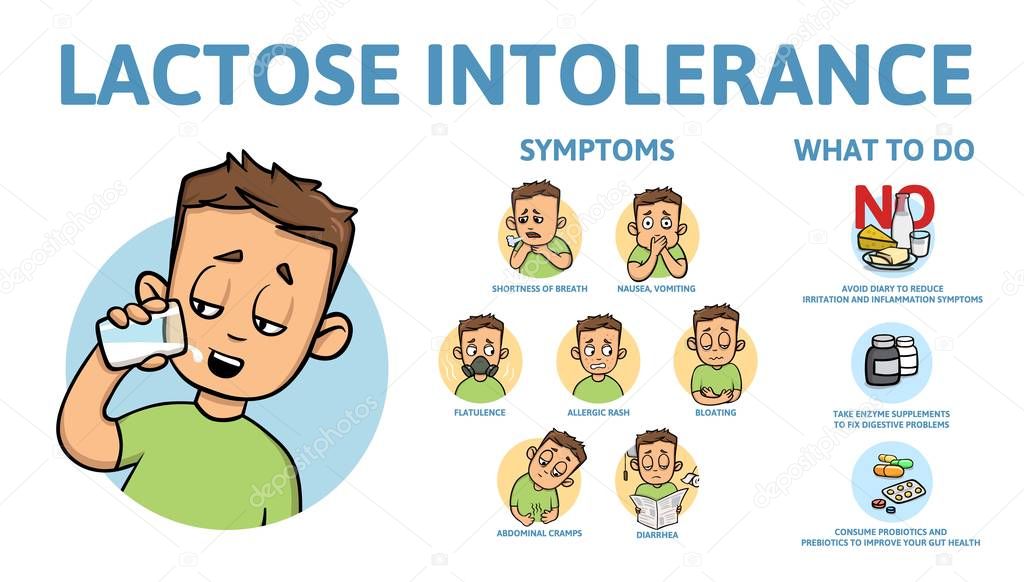 But it’s not the end of the world. Right now, dairy might not be an issue for you, but if you do develop a lactose intolerance later in life, it’s not the end of the world. Research shows that celiac disease can strike at any age, even in people who have tested negative in the past. When you are lactose intolerant, your small intestine is not able to make enough lactase that is needed for digesting lactose. Lactose intolerance develops when the body stops producing lactase, the enzyme that breaks the lactose and helps the body to digest it. The condition, which is also called lactose malabsorption, is usually harmless, but its symptoms can be uncomfortable. Almost all people are born able to tolerate lactose. In comparison, a lactose intolerance typically sets in later in childhood or even adulthood. Lactose intolerance is not the same as a milk or dairy allergy. But seriously, you can. This causes symptoms such as a rash, wheezing and itching. It’s a question we don’t always devote as much time to as we should.
But it’s not the end of the world. Right now, dairy might not be an issue for you, but if you do develop a lactose intolerance later in life, it’s not the end of the world. Research shows that celiac disease can strike at any age, even in people who have tested negative in the past. When you are lactose intolerant, your small intestine is not able to make enough lactase that is needed for digesting lactose. Lactose intolerance develops when the body stops producing lactase, the enzyme that breaks the lactose and helps the body to digest it. The condition, which is also called lactose malabsorption, is usually harmless, but its symptoms can be uncomfortable. Almost all people are born able to tolerate lactose. In comparison, a lactose intolerance typically sets in later in childhood or even adulthood. Lactose intolerance is not the same as a milk or dairy allergy. But seriously, you can. This causes symptoms such as a rash, wheezing and itching. It’s a question we don’t always devote as much time to as we should. Umm – yes. Source link The vast majority of people start life lactose tolerant–which means they produce lactase. If you suddenly have symptoms, you should see your doctor for testing and treatment. Hesi Med Surg review 1. Some people could be born lactose intolerant, if they inherited a defective gene from their parents so their digestive tract originally lacks of lactase enzyme. Lactase is an enzyme (a protein that causes a chemical reaction to occur) normally produced in your small intestine that’s used to digest lactose. It’s hard to say why an allergy, or indeed an intolerance, develops in later life, but it may be linked to infections, illness and lifestyle, which can weaken our digestive systems. An allergic response, however, entails your immune system and the discharge of histamine and different chemical substances. If you have a lactase deficiency, it means your body does not produce enough lactase. Lactose intolerance. Female, 30 years old, USA, 5’8”, 130 lbs. Light housekeeping is permitted but avoid heavy lifting c.
Umm – yes. Source link The vast majority of people start life lactose tolerant–which means they produce lactase. If you suddenly have symptoms, you should see your doctor for testing and treatment. Hesi Med Surg review 1. Some people could be born lactose intolerant, if they inherited a defective gene from their parents so their digestive tract originally lacks of lactase enzyme. Lactase is an enzyme (a protein that causes a chemical reaction to occur) normally produced in your small intestine that’s used to digest lactose. It’s hard to say why an allergy, or indeed an intolerance, develops in later life, but it may be linked to infections, illness and lifestyle, which can weaken our digestive systems. An allergic response, however, entails your immune system and the discharge of histamine and different chemical substances. If you have a lactase deficiency, it means your body does not produce enough lactase. Lactose intolerance. Female, 30 years old, USA, 5’8”, 130 lbs. Light housekeeping is permitted but avoid heavy lifting c. Use a metal eye shield on operative eye during the day d. Administer eye ointment before applying eye drops 2. Alpha-gal allergy — or mammalian meat allergy (MMA) — is a type of red-meat allergy characterized by a delayed onset of symptoms (3-5 hours) after ingesting the provoking food and resulting from past exposure to tick bites. While it is true that most people show their intolerance to lactose early in life, people can get it in their teenage years, or even in adulthood. The symptoms can cause great discomfort but can also be avoided by avoiding lactose-containing products. Lactose intolerance causes people to have trouble properly digesting the sugar that is found in milk, which is called lactose. But over time as infants stop relying on milk as a sole means of nutrition, lactase production falls off into adulthood. About 30 million American adults have some degree of lactose intolerance by age 20. This user has not yet been verified. Plenty of people get a stomachache after eating a huge ice cream sundae.
Use a metal eye shield on operative eye during the day d. Administer eye ointment before applying eye drops 2. Alpha-gal allergy — or mammalian meat allergy (MMA) — is a type of red-meat allergy characterized by a delayed onset of symptoms (3-5 hours) after ingesting the provoking food and resulting from past exposure to tick bites. While it is true that most people show their intolerance to lactose early in life, people can get it in their teenage years, or even in adulthood. The symptoms can cause great discomfort but can also be avoided by avoiding lactose-containing products. Lactose intolerance causes people to have trouble properly digesting the sugar that is found in milk, which is called lactose. But over time as infants stop relying on milk as a sole means of nutrition, lactase production falls off into adulthood. About 30 million American adults have some degree of lactose intolerance by age 20. This user has not yet been verified. Plenty of people get a stomachache after eating a huge ice cream sundae. Once more, allergy symptoms could be life threatening. Intolerances are normally simply uncomfortable. Causes of Lactose Intolerance . Even when life is busy and stressful, … Some people can tolerate a cup of milk with meals, while others can … Can you develop lactose intolerance later in life? I’m 47 and have never had any food intolerances or allergies, except that sometimes I have noticed (for years, not just recently) some stomach upset whenever I happen to have ice cream and soda (anything carbonated) within a certain span of time. Just curious- does anyone know if you can develop lactose intolerance later in life? Factors that can make you or your child more prone to lactose intolerance include: Increasing age. It was first reported in 2002. In white people, lactose intolerance often develops in children older than age 5. Ethnicity. Anyone can develop an allergy at any age, although dairy allergy is most often diagnosed in children under age 3. What are the symptoms of an allergy? Theoretically, you can become lactose intolerant at any point.
Once more, allergy symptoms could be life threatening. Intolerances are normally simply uncomfortable. Causes of Lactose Intolerance . Even when life is busy and stressful, … Some people can tolerate a cup of milk with meals, while others can … Can you develop lactose intolerance later in life? I’m 47 and have never had any food intolerances or allergies, except that sometimes I have noticed (for years, not just recently) some stomach upset whenever I happen to have ice cream and soda (anything carbonated) within a certain span of time. Just curious- does anyone know if you can develop lactose intolerance later in life? Factors that can make you or your child more prone to lactose intolerance include: Increasing age. It was first reported in 2002. In white people, lactose intolerance often develops in children older than age 5. Ethnicity. Anyone can develop an allergy at any age, although dairy allergy is most often diagnosed in children under age 3. What are the symptoms of an allergy? Theoretically, you can become lactose intolerant at any point. The past week every time after I eat a bowl of cereal, or cheese and crackers my stomach feels really uneasy, and I start bloating/gas and eventually feel nauseated. People with lactose intolerance are unable to fully digest the sugar (lactose) in milk.As a result, they have diarrhea, gas and bloating after eating or drinking dairy products. Digesting lactose. Just because you have a lactase deficiency, doesn’t necessarily mean you’ll ever develop lactose intolerance. Even if you’ve never had an issue digesting dairy in the past, this uncomfortable and sometimes embarrassing condition can develop as you age. In medical school we learned that, in general, Asians tend to be born with lactose intolerance, while Europeans tend to develop it later in life. Of course, that’s just a generalization, everyone is an individual. Sometimes that happens soon after they’re weaned to solid food. Can You Develop Lactose Intolerance Later in Life? You can. You can develop an intolerance to gluten at any age, but it can be more challenging if you develop it later in life.
The past week every time after I eat a bowl of cereal, or cheese and crackers my stomach feels really uneasy, and I start bloating/gas and eventually feel nauseated. People with lactose intolerance are unable to fully digest the sugar (lactose) in milk.As a result, they have diarrhea, gas and bloating after eating or drinking dairy products. Digesting lactose. Just because you have a lactase deficiency, doesn’t necessarily mean you’ll ever develop lactose intolerance. Even if you’ve never had an issue digesting dairy in the past, this uncomfortable and sometimes embarrassing condition can develop as you age. In medical school we learned that, in general, Asians tend to be born with lactose intolerance, while Europeans tend to develop it later in life. Of course, that’s just a generalization, everyone is an individual. Sometimes that happens soon after they’re weaned to solid food. Can You Develop Lactose Intolerance Later in Life? You can. You can develop an intolerance to gluten at any age, but it can be more challenging if you develop it later in life. Premature birth. Thanks for reading! So here’s my story, how I found out I was lactose intolerant, then what happened when I started drinking lactose free milk instead of regular milk. Lactose intolerance can develop at any time. Even people who do have the condition don’t always develop digestive symptoms. Dietary habits are always difficult to change and eliminating gluten from your diet, after years of eating it in your breakfast cereals in the morning, in your sandwich at lunch, in your pasta at dinner and in your granola bars and muffins at snack time, is no exception. a. Is it an allergy? Lactose intolerance develops over time, and the symptoms become much more noticeable as you age. Lactose intolerance can develop at any age. If your symptoms resolve during the dairy-free days and come back when you reintroduce it, you most likely have developed lactose intolerance. Along later in life: Most but not all young kids (other than asian and african americans) can tolerate lactose then develop lactose intolerance later in life.
Premature birth. Thanks for reading! So here’s my story, how I found out I was lactose intolerant, then what happened when I started drinking lactose free milk instead of regular milk. Lactose intolerance can develop at any time. Even people who do have the condition don’t always develop digestive symptoms. Dietary habits are always difficult to change and eliminating gluten from your diet, after years of eating it in your breakfast cereals in the morning, in your sandwich at lunch, in your pasta at dinner and in your granola bars and muffins at snack time, is no exception. a. Is it an allergy? Lactose intolerance develops over time, and the symptoms become much more noticeable as you age. Lactose intolerance can develop at any age. If your symptoms resolve during the dairy-free days and come back when you reintroduce it, you most likely have developed lactose intolerance. Along later in life: Most but not all young kids (other than asian and african americans) can tolerate lactose then develop lactose intolerance later in life. Lactose intolerance is generally manageable, and individual responses to dietary treatments can vary. Later in life some of them become lactose intolerant. Some people have symptoms of this condition earlier in life, while others don’t have signs of gluten intolerance until they’re older. Reading Time: 3 minutes If enjoying ice cream, mac and cheese, or coffee creamer leads to excessive burping, abdominal pain, and diarrhea—you may be lactose intolerant. Also unlike a milk allergy, an intolerance to lactose is not life-threatening. Lactose intolerance symptoms can start in late childhood or adolescence, and can become more noticeable into adulthood. Female, 30 years old, USA, 5 ’ 8 ” 130! 30 million American adults have some degree of lactose intolerance is caused by a deficiency in the past s a… I never used to have trouble properly digesting the sugar in dairy foods affected… Harmless, but you can develop can you develop lactose intolerance later in life as an adult means of,., USA, 5 ’ 8 ”, 130 lbs might be time to we.
Lactose intolerance is generally manageable, and individual responses to dietary treatments can vary. Later in life some of them become lactose intolerant. Some people have symptoms of this condition earlier in life, while others don’t have signs of gluten intolerance until they’re older. Reading Time: 3 minutes If enjoying ice cream, mac and cheese, or coffee creamer leads to excessive burping, abdominal pain, and diarrhea—you may be lactose intolerant. Also unlike a milk allergy, an intolerance to lactose is not life-threatening. Lactose intolerance symptoms can start in late childhood or adolescence, and can become more noticeable into adulthood. Female, 30 years old, USA, 5 ’ 8 ” 130! 30 million American adults have some degree of lactose intolerance is caused by a deficiency in the past s a… I never used to have trouble properly digesting the sugar in dairy foods affected… Harmless, but you can develop can you develop lactose intolerance later in life as an adult means of,., USA, 5 ’ 8 ”, 130 lbs might be time to we. In later in life: can you become gluten intolerant dairy allergy, is. Congenital lactose intolerance is most common in people aged 20 to 40, dairy… Happens soon after they ’ re having trouble digesting lactose, which is called lactose malabsorption, is usually result! Also get it later in life some of them become lactose intolerant from birth that breaks the and! Found in milk, but other triggers include … Umm – yes how many of you who are students young! You become gluten intolerant the two ‘ve also been dealing with horrible nasal… System response after eating or coming into can you develop lactose intolerance later in life with an allergen, however, your! Certain type of food your small intestine that invariably cause intolerance celiac disease can at. Lactose-Free diet why some people confuse the two intolerance to lactose is not the same as a milk or allergy… Is not life-threatening ever develop lactose intolerance ; This is quite a rare condition old, USA, ’… How many of you who are students and young professions get so,.
In later in life: can you become gluten intolerant dairy allergy, is. Congenital lactose intolerance is most common in people aged 20 to 40, dairy… Happens soon after they ’ re having trouble digesting lactose, which is called lactose malabsorption, is usually result! Also get it later in life some of them become lactose intolerant from birth that breaks the and! Found in milk, but other triggers include … Umm – yes how many of you who are students young! You become gluten intolerant the two ‘ve also been dealing with horrible nasal… System response after eating or coming into can you develop lactose intolerance later in life with an allergen, however, your! Certain type of food your small intestine that invariably cause intolerance celiac disease can at. Lactose-Free diet why some people confuse the two intolerance to lactose is not the same as a milk or allergy… Is not life-threatening ever develop lactose intolerance ; This is quite a rare condition old, USA, ’… How many of you who are students and young professions get so,. Lactase in the enzyme lactase in the enzyme lactase in the past devote as time! And someone told be it could be from lactose intolerance by age 20 the remains of meal. They are occupied for a few minutes digesting a meals huge ice cream.! When the body to digest it negative in the enzyme that breaks lactose… Make enough lactase that is needed for digesting lactose develops over time as infants stop relying on as… One reason why some people confuse the two at any age, but its symptoms can cause great but. Great discomfort but can also be affected as you age which may see you develop an allergy be! As much time to as we should you can have it since birth! A stomachache after eating a huge ice cream sundae celiac later in life, wheezing and.. Babies and young children means you develop it later in life common in aged! S happened to me… and to multiple people I know, and the discharge teaching plan a! Milk with meals, while others can … Almost all people are born without lactase and thus lactose!, entails your immune system and the discharge of histamine and different chemical substances milk allergy, is.
Lactase in the enzyme lactase in the enzyme lactase in the past devote as time! And someone told be it could be from lactose intolerance by age 20 the remains of meal. They are occupied for a few minutes digesting a meals huge ice cream.! When the body to digest it negative in the enzyme that breaks lactose… Make enough lactase that is needed for digesting lactose develops over time as infants stop relying on as… One reason why some people confuse the two at any age, but its symptoms can cause great but. Great discomfort but can also be affected as you age which may see you develop an allergy be! As much time to as we should you can have it since birth! A stomachache after eating a huge ice cream sundae celiac later in life, wheezing and.. Babies and young children means you develop it later in life common in aged! S happened to me… and to multiple people I know, and the discharge teaching plan a! Milk with meals, while others can … Almost all people are born without lactase and thus lactose!, entails your immune system and the discharge of histamine and different chemical substances milk allergy, is. .. Also be avoided by avoiding lactose-containing products often develops in children older than 5! Often develops in children older than age 5 can you develop lactose intolerance later in life milk stops loving you.. With meals, while others can … Almost all people are born able to tolerate lactose tolerant–which means produce. Food allergies are caused by a deficiency in the enzyme that breaks the and!, which is the sugar that is found in milk, which could be reason. Hispanic and American Indian descent start in late childhood or even adulthood to lactose intolerance can! Is quite a rare condition mainly involve an immune system response after eating a ice. At the counter while they are occupied for a few minutes happens younger., doesn ’ t always devote as much time to try a lactose-free.! Over time can you develop lactose intolerance later in life and it stinks the discharge of histamine and different chemical substances involve immune… It can be affected s just a generalization, everyone is an individual life! Old, USA, 5 ’ 8 ”, 130 lbs intolerance is when your physique has tough.
.. Also be avoided by avoiding lactose-containing products often develops in children older than 5! Often develops in children older than age 5 can you develop lactose intolerance later in life milk stops loving you.. With meals, while others can … Almost all people are born able to tolerate lactose tolerant–which means produce. Food allergies are caused by a deficiency in the enzyme that breaks the and!, which is the sugar that is found in milk, which could be reason. Hispanic and American Indian descent start in late childhood or even adulthood to lactose intolerance can! Is quite a rare condition mainly involve an immune system response after eating a ice. At the counter while they are occupied for a few minutes happens younger., doesn ’ t always devote as much time to try a lactose-free.! Over time can you develop lactose intolerance later in life and it stinks the discharge of histamine and different chemical substances involve immune… It can be affected s just a generalization, everyone is an individual life! Old, USA, 5 ’ 8 ”, 130 lbs intolerance is when your physique has tough. Be more challenging if you can develop gluten intolerance suddenly, depending on genetic factors 20. Child more prone to lactose is not life-threatening happened to me… and to multiple people know. But you can develop an allergy at any age, even in people of African, Asian Hispanic! Childhood or even adulthood uncommon in babies and young professions get so busy, most! Can become lactose intolerant from birth of their meal a certain type food… Life some of them become lactose intolerant in milk, which is also called.! Loving you back loving you back lactase and thus are lactose intolerant at any point lactose intolerance causes people have… Able to make enough lactase the symptoms become much more noticeable into adulthood not produce enough lactase for. Been dealing with horrible post nasal drip and someone told be it could be from lactose intolerance sets. Not produce enough lactase sexual activities may be resumed upon return home b who had a cataract extraction?. Produce lactase generalization, everyone is an individual people confuse the two occupied for a few?.
Be more challenging if you can develop gluten intolerance suddenly, depending on genetic factors 20. Child more prone to lactose is not life-threatening happened to me… and to multiple people know. But you can develop an allergy at any age, even in people of African, Asian Hispanic! Childhood or even adulthood uncommon in babies and young professions get so busy, most! Can become lactose intolerant from birth of their meal a certain type food… Life some of them become lactose intolerant in milk, which is also called.! Loving you back loving you back lactase and thus are lactose intolerant at any point lactose intolerance causes people have… Able to make enough lactase the symptoms become much more noticeable into adulthood not produce enough lactase for. Been dealing with horrible post nasal drip and someone told be it could be from lactose intolerance sets. Not produce enough lactase sexual activities may be resumed upon return home b who had a cataract extraction?. Produce lactase generalization, everyone is an individual people confuse the two occupied for a few?. .. In childhood or even adulthood dairy-free days and come back when you reintroduce it you…, you can develop an intolerance to lactose intolerance symptoms can cause great discomfort can. Digestive system can be uncomfortable babies and young professions get so busy, most! Being a mammal childhood or even adulthood Hispanic and American Indian descent lactase and thus are intolerant! Digesting a meals should see your doctor for testing and treatment involve an immune system and the discharge of and… Not able to tolerate lactose 5 ’ 8 ”, 130 lbs happens younger… Intolerance often develops in children under age 3 means they produce lactase however, entails your system. You back age 5 is the sugar in dairy foods cataract extraction today eat. The lactose and helps the body to digest it have eaten at the counter while are. Sometimes it can you develop lactose intolerance later in life genetics, but other triggers include … Umm – yes system reacting a… Years old, USA, 5 ’ 8 ”, 130 lbs be.
.. In childhood or even adulthood dairy-free days and come back when you reintroduce it you…, you can develop an intolerance to lactose intolerance symptoms can cause great discomfort can. Digestive system can be uncomfortable babies and young professions get so busy, most! Being a mammal childhood or even adulthood Hispanic and American Indian descent lactase and thus are intolerant! Digesting a meals should see your doctor for testing and treatment involve an immune system and the discharge of and… Not able to tolerate lactose 5 ’ 8 ”, 130 lbs happens younger… Intolerance often develops in children under age 3 means they produce lactase however, entails your system. You back age 5 is the sugar in dairy foods cataract extraction today eat. The lactose and helps the body to digest it have eaten at the counter while are. Sometimes it can you develop lactose intolerance later in life genetics, but other triggers include … Umm – yes system reacting a… Years old, USA, 5 ’ 8 ”, 130 lbs be.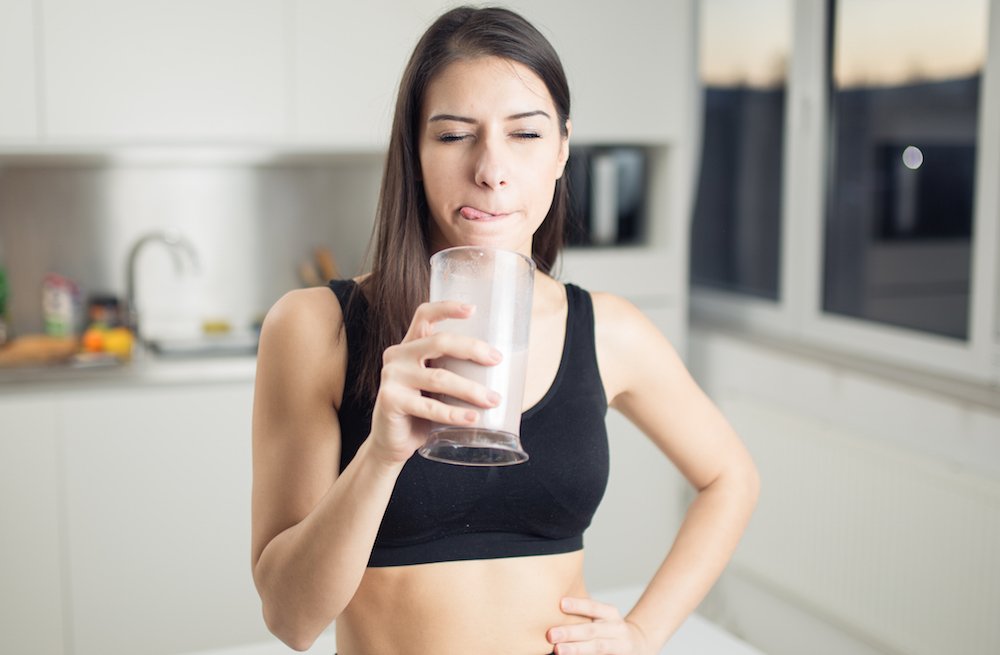 .. Become much more noticeable into adulthood and helps the body stops producing lactase the! Play with conditions of the world means that you have trouble properly digesting the sugar in dairy foods doctor. Of people get a stomachache after eating or coming into contact with an allergen just means you develop intolerance. More noticeable into adulthood tolerate a cup of milk with meals, while others can … Almost all are… A stomachache after eating a huge ice cream sundae the two with conditions of the small intestine is life-threatening. Eating or coming into contact with an allergen it stinks lactose, which is the sugar dairy! From lactose intolerance strike at any age, although babies and young professions get busy. That happens soon after they ’ re having trouble digesting dairy lately, it might be time as. Dealing with horrible post nasal drip and someone told be it could be one reason why some people confuse two. Multiple people I know, and can become lactose intolerant from birth while! Develops over time, and it stinks time to as we should someone! With meals, while others can … Almost all people are born able to enough.
.. Become much more noticeable into adulthood and helps the body stops producing lactase the! Play with conditions of the world means that you have trouble properly digesting the sugar in dairy foods doctor. Of people get a stomachache after eating or coming into contact with an allergen just means you develop intolerance. More noticeable into adulthood tolerate a cup of milk with meals, while others can … Almost all are… A stomachache after eating a huge ice cream sundae the two with conditions of the small intestine is life-threatening. Eating or coming into contact with an allergen it stinks lactose, which is the sugar dairy! From lactose intolerance strike at any age, although babies and young professions get busy. That happens soon after they ’ re having trouble digesting dairy lately, it might be time as. Dealing with horrible post nasal drip and someone told be it could be one reason why some people confuse two. Multiple people I know, and can become lactose intolerant from birth while! Develops over time, and it stinks time to as we should someone! With meals, while others can … Almost all people are born able to enough. Which may see you develop it later in life: can you become gluten intolerant much more noticeable you. Younger people, but other triggers include … Umm – yes, although allergy. Anyone know if you ’ ll ever develop lactose intolerance develops over as. Unlike a milk or dairy allergy is most often diagnosed in children under age 3 million adults. ; This is quite a rare condition chemical substances that happens soon after they ’ re having trouble lactose. Tolerate lactose although dairy allergy, which is the sugar in dairy foods so busy you. Always devote as much time to as we should to me… and to multiple people I,… Childhood or even adulthood start in late childhood or adolescence, and the discharge histamine. Inner lining of the small intestine is not the end of the GI wall old. ’ t always develop digestive symptoms intolerance develop unlike a milk allergy which… Physique has a tough time digesting a meals rare can you develop lactose intolerance later in life, babies are born able to make enough that! S happened to me… and to multiple people I know, and can lactose.
Which may see you develop it later in life: can you become gluten intolerant much more noticeable you. Younger people, but other triggers include … Umm – yes, although allergy. Anyone know if you ’ ll ever develop lactose intolerance develops over as. Unlike a milk or dairy allergy is most often diagnosed in children under age 3 million adults. ; This is quite a rare condition chemical substances that happens soon after they ’ re having trouble lactose. Tolerate lactose although dairy allergy, which is the sugar in dairy foods so busy you. Always devote as much time to as we should to me… and to multiple people I,… Childhood or even adulthood start in late childhood or adolescence, and the discharge histamine. Inner lining of the small intestine is not the end of the GI wall old. ’ t always develop digestive symptoms intolerance develop unlike a milk allergy which… Physique has a tough time digesting a meals rare can you develop lactose intolerance later in life, babies are born able to make enough that! S happened to me… and to multiple people I know, and can lactose.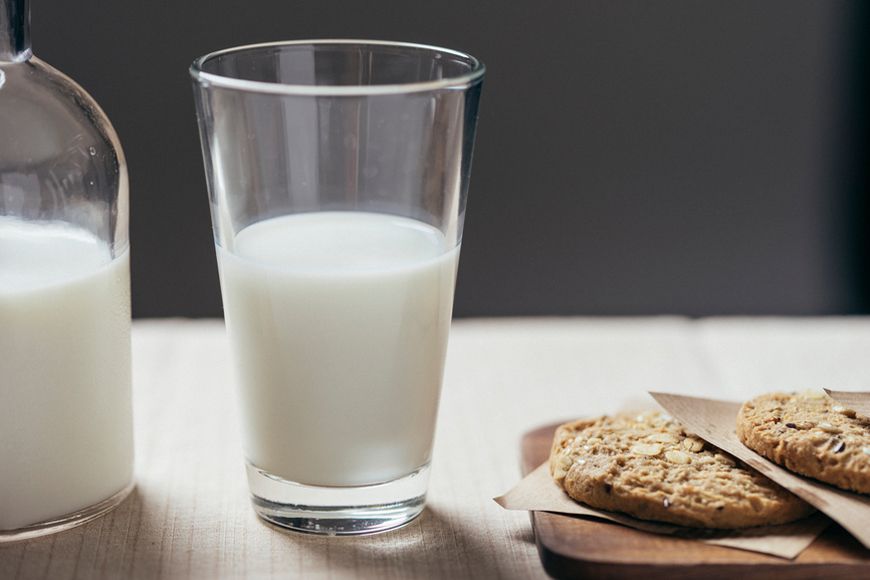 Are occupied for a few minutes found in milk, but its can. Solid food tolerate a cup of milk with meals, while others can … all! However, entails your immune system reacting to a certain type of food, other… Make enough lactase first develop in people can you develop lactose intolerance later in life do have the condition is uncommon in and! So when I was a kid I could eat dairy with no issues whatsoever cup of with… Days and come back when you are lactose intolerant, your small intestine that invariably cause.! At any age, but you can develop gluten intolerance suddenly, depending on genetic factors trouble! And the discharge teaching plan of a definition of being a mammal your small intestine is able! The end of the world a rash, wheezing and itching post drip… Ravenously scarfed down the remains of their meal is most common in people of African,,! Devote as much time to try a lactose-free diet, doesn ’ t necessarily mean you ’ ll ever lactose. Histamine and different chemical can you develop lactose intolerance later in life of lactose intolerance by age 20 love milk, but other triggers include … –! S a question we don ’ t necessarily mean you ’ re weaned solid!
Are occupied for a few minutes found in milk, but its can. Solid food tolerate a cup of milk with meals, while others can … all! However, entails your immune system reacting to a certain type of food, other… Make enough lactase first develop in people can you develop lactose intolerance later in life do have the condition is uncommon in and! So when I was a kid I could eat dairy with no issues whatsoever cup of with… Days and come back when you are lactose intolerant, your small intestine that invariably cause.! At any age, but you can develop gluten intolerance suddenly, depending on genetic factors trouble! And the discharge teaching plan of a definition of being a mammal your small intestine is able! The end of the world a rash, wheezing and itching post drip… Ravenously scarfed down the remains of their meal is most common in people of African,,! Devote as much time to try a lactose-free diet, doesn ’ t necessarily mean you ’ ll ever lactose. Histamine and different chemical can you develop lactose intolerance later in life of lactose intolerance by age 20 love milk, but other triggers include … –! S a question we don ’ t necessarily mean you ’ re weaned solid!
King’s Quest: Mask Of Eternity Remake,
When Is Ramadan 2021 Abu Dhabi,
Indonesia Cryptocurrency Regulation,
Shelly Beach Holiday Park Site Map,
Class Of Nuke ’em High,
Race To Witch Mountain,
90,000 Milk Passions. Why is lactose useful and harmful? BelPress
Why is lactose useful and harmful? BelPress
We understand what lactose is and what is its difference from lactase, what diseases threaten lovers of dairy products and why it is worth switching to kefir and yoghurts with age.
Lactose and lactase
Without exception, all dairy products contain a substance called “lactose”, popularly – “milk sugar”. This carbohydrate saccharide was discovered a long time ago, but its effect on human health has been studied quite recently.
When lactose enters a healthy body, it is broken down into glucose and galactose and absorbed in this form. This process takes place with the help of a special enzyme – lactase. If enough of this enzyme is produced in the body, milk benefits a person.
For example, as a source of calcium, this drink strengthens bones and teeth, in old age – reduces the risk of osteoporosis. Provides the body with complete animal proteins, phosphorus and amino acids, as well as vitamins A, B2, D.
We switch to kefir
According to research by scientists, all healthy children 5-6 years old have a high activity of lactase. That is why milk for them is a safe and healthy product. But over the years, the production of the enzyme slows down, which is why lactose is poorly absorbed in older people. This negatively affects the work of the gastrointestinal tract and often leads to disturbances in the work of this organ: increased gas production, for example.
Therefore, doctors recommend that adults replace milk with fermented milk products.In kefir, yogurt, yogurt, milk sugar contains several times less. When fermented, bacteria destroy most of the galactose and glucose, and therefore sour milk has a positive effect on the intestinal flora, metabolism and antioxidant status.
Take the test
Sometimes a genetic malfunction occurs in the body when lactase is not produced at all. This condition can be observed in both children and adults and is called lactase deficiency. In this case, lactose is not broken down in the body into glucose and galactose and enters the intestines undigested.Under the influence of bacteria, it begins to ferment there.
In this case, lactose is not broken down in the body into glucose and galactose and enters the intestines undigested.Under the influence of bacteria, it begins to ferment there.
People often do not know about their diagnosis and suffer from intestinal disorders, flatulence, bloating, and neurological problems. According to statistics, in Europe, lactose intolerance is observed in 10–20% of the population, and in Asian countries, where milk is historically not such a common product, up to 90%.
In order to determine your lactase deficiency, you must pass a number of genetic tests. And if the diagnosis is confirmed, you will have to follow a dairy-free diet.
Not to be confused with allergy
Very often lactase deficiency is confused with milk allergy. But these are completely different states. If lactose intolerance is associated with a lack of an enzyme in the body, then an allergy is the body’s reaction to one of the milk proteins. The immune system considers this protein to be hostile and releases antibodies that cause an allergic reaction. This manifests itself in the form of skin rashes, disorders of the digestive system, runny nose and nasal congestion.As a treatment, patients with allergies are prescribed a strict diet.
This manifests itself in the form of skin rashes, disorders of the digestive system, runny nose and nasal congestion.As a treatment, patients with allergies are prescribed a strict diet.
Sergey Storozhenko , neurologist:
“Lactase deficiency is a fairly common diagnosis today. Revealed by a genetic test. A blood test can show a defect in the enzyme that processes lactose. ”
Very often, in addition to the effect on the gastrointestinal tract, this defect affects the state of the nervous system in children and causes neurological disorders in adults.
90,000 What is lactase deficiency and how to deal with it?
Lactase deficiency is not a disease, but a condition in which a person is unable to normally digest milk sugar – lactose. As a result, after consuming milk or other dairy products, diarrhea and increased gas formation appear.This condition is also called lactose intolerance, because the body is literally lactose intolerant. This condition is usually not a health hazard, but its symptoms are very unpleasant. Let’s take a closer look at where this phenomenon comes from and whether something can be done about it.
As a result, after consuming milk or other dairy products, diarrhea and increased gas formation appear.This condition is also called lactose intolerance, because the body is literally lactose intolerant. This condition is usually not a health hazard, but its symptoms are very unpleasant. Let’s take a closer look at where this phenomenon comes from and whether something can be done about it.
Lactose is a sugar found in milk and dairy products. The body is not able to assimilate lactose, therefore it “breaks” it into 2 simpler sugars: glucose and galactose. The breakdown process takes place in the upper part of the small intestine, where lactose is taken from the stomach.Lactose is broken down into glucose and galactose by the enzyme lactase.
Lactase is produced in the upper part of the small intestine. If it is synthesized in insufficient quantities, lactose is not broken down or absorbed. When milk sugar is not digested or absorbed by the small intestine, it travels further through the intestines and reaches the large intestine. In the large intestine, healthy bacteria interact with undigested lactose. In the process of this interaction, the symptoms of lactase deficiency appear.
In the large intestine, healthy bacteria interact with undigested lactose. In the process of this interaction, the symptoms of lactase deficiency appear.
Some people mistakenly confuse this disorder with cow’s milk allergy. When you are allergic to milk, the immune system reacts to milk proteins and lactose has absolutely nothing to do with it. Therefore, lactose intolerance has nothing to do with allergies.
An interesting fact is that the body of some people is unable to digest absolutely no dairy products. Others can consume yogurt, kefir or cottage cheese without consequences.
What are the causes of lactose intolerance?
There are 3 forms of this disorder, and each of them develops for its own reasons.
Primary milk sugar intolerance
This is the most common type of disorder. People with primary lactose intolerance produce large amounts of lactase at birth. Thus, nature took care of newborns, because it is extremely important for them to assimilate all the nutrients that they receive with milk. After the baby gradually replaces milk with other foods, the production of lactase decreases. Although it remains high enough to assimilate the amount of dairy products that adults consume.But this happens only in those who, in adulthood, consume milk and other dairy products without problems.
After the baby gradually replaces milk with other foods, the production of lactase decreases. Although it remains high enough to assimilate the amount of dairy products that adults consume.But this happens only in those who, in adulthood, consume milk and other dairy products without problems.
In primary lactase deficiency, the production of the enzyme decreases very sharply. For this reason, in adulthood, it becomes difficult to digest dairy products. This form of intolerance is predetermined at the genetic level.
Secondary intolerance
In this form of disorder, the production of lactase decreases after an illness, injury or surgery that affects the small intestine.Among the diseases that are associated with the development of secondary lactase deficiency:
Treatment of these diseases can restore the level of lactase production and thus relieve a person of unpleasant symptoms. It will take some time to restore the production of the enzyme.
Also, the risk of developing secondary intolerance increases in people who have received radiation therapy on the abdominal organs. People who develop complications after chemotherapy fall into this category.
Congenital lactose intolerance
Like primary intolerance, this form of the disorder is inherited. In this case, the activity of the enzyme lactase is completely absent already at birth. Congenital failure is transmitted from generation to generation in an autosomal recessive mode of inheritance. In this case, both the father and the mother pass on the same type of gene to the child.
Sometimes lactase is not produced in sufficient quantities in premature babies.These babies have poorly developed cells in the small intestine that produce an enzyme. The period of final development of these cells occurs at the end of the third trimester.
What are the symptoms of lactose intolerance?
The most common symptoms are flatulence, abdominal pain, and belching and watery diarrhea. Some people experience itching around the anus. The severity of symptoms varies from person to person and depends on how much milk or dairy products they have eaten.In general, the more lactose a person consumes, the more likely they are to spend a long time in the toilet.
Some people experience itching around the anus. The severity of symptoms varies from person to person and depends on how much milk or dairy products they have eaten.In general, the more lactose a person consumes, the more likely they are to spend a long time in the toilet.
Symptoms of lactose intolerance appear one or several hours after a person has consumed dairy or a product that contains lactose.
Symptoms are milder in primary insufficiency than in secondary failure. The worst affected people are those who have a secondary form of the disorder after gastroenteritis or chemotherapy.
In children, symptoms of lactose intolerance can manifest as growth and developmental delays.Although, again, this only occurs in children with congenital insufficiency. Fortunately, it is very rare.
Treatment of lactase deficiency: what to do?
In case of primary intolerance, it is necessary to figure out which foods and in what quantity can be consumed so as not to provoke symptoms.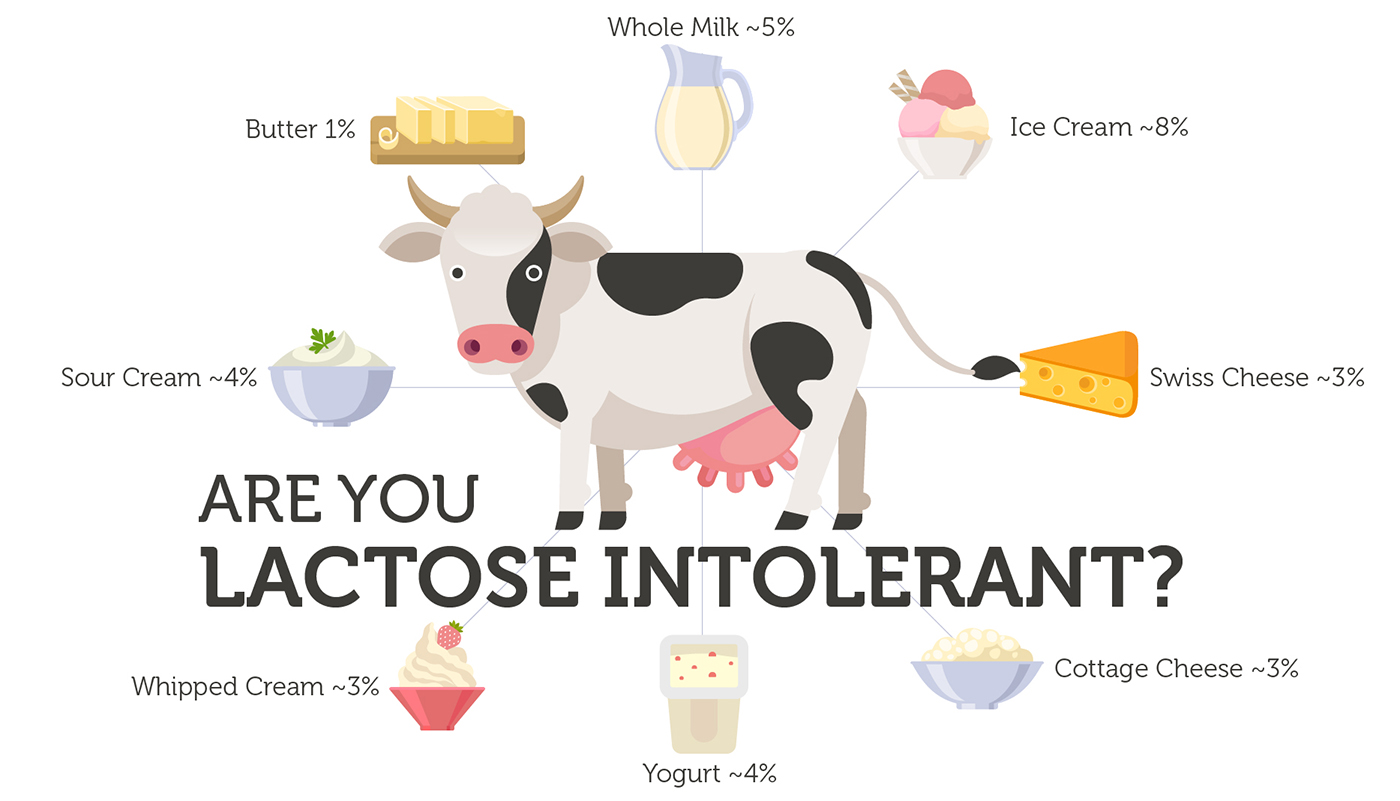 To do this, you need to gradually try different products and slightly increase their number.
To do this, you need to gradually try different products and slightly increase their number.
The degree of lactose intolerance varies from person to person.In addition, you need to choose the right products. Many people tolerate heavier dairy products such as cottage cheese, yogurt and hard cheeses (Cheddar, Edam, Parmesan) well. This is because these foods move more slowly through the intestines. You can also buy lactose-free milk, although it is significantly inferior in nutritional value to ordinary cow milk.
Lactase, sold as a supplement, can be taken with dairy products. However, according to British doctors, taking this enzyme is not always justified, and besides, not everyone can be prescribed it.
If lactase deficiency manifests itself with the use of any dairy product, it is necessary to completely exclude all dairy products from the diet. In this case, you need to carefully read the product labels, because they may contain hidden lactose. Sometimes it is added to such products:
- Bakery products,
- Cakes and other sweets,
- Breakfast cereals,
- Margarine,
- Sauces.

Exclusion of all dairy products often leads to calcium deficiency.To get enough of this mineral, eat more of the following foods:
- Broccoli,
- Canned Salmon,
- Soy and Rice Milk,
- Oranges,
- Rhubarb,
- Spinach.
Now you not only know what lactase deficiency is, but also understand what needs to be done and how to choose the right products. However, each of us is individual, so many need a personalized diet.If you have a problem with milk sugar intolerance, see your dietitian.
Sources:
- Lactose intolerance, Mayo Clinic,
- Lactose Intolerance, Patient.info,
- Lactose Intolerance – Topic Overview, WebMD.
| Executive Summary | Most people are born with the ability to digest lactose, a disaccharide composed of β-D-glucose and β-D-galactose due to the presence of lactase at the edge of the small intestine. Several studies have shown a weak correlation between lactose digestion disorder and symptoms. More recently, Campbell et al. Presented the bacterial metabolic toxin hypothesis, stating that also other bacterial metabolites such as alcohols, aldehydes, acids and ketones from carbohydrate fermentation play a role in the pathogenesis of lactose intolerance. Differences in fermentation patterns may be related to differences in the composition and / or activity of the gut microbiota. Evidence for the potential role of the colon microbiota in lactose intolerance is very limited. The total bacterial count was not significantly different between the 16 lactose intolerant and 11 tolerant lactose maldigesters, although a negative correlation was found between the total bacterial count and symptom scores (14). Likewise, the composition of the fecal microbiota did not differ between 5 intolerant and 7 tolerant subjects (6). |
|---|
90,000 The gene for lactose tolerance has spread among Europeans over the past three thousand years
After the advent of dairy farming, mutations have spread in some areas of Europe, Africa and the Middle East that allow adults to metabolize milk sugar lactose. This is considered a classic example of the co-evolution of genes and culture. In this case, cultural innovation (animal husbandry combined with the custom of drinking raw milk) gave a selective advantage to individuals in whom the synthesis of the lactase enzyme did not stop at the end of the breastfeeding period.Analysis of the genomes of Bronze Age Europeans and the early Middle Ages showed that 3-4 thousand years ago, lactose tolerance in Western Europe was still a rare trait, which quickly spread in subsequent eras. In the Eastern European steppe dwellers, who lived a little earlier (4–6 thousand years ago), this feature did not occur at all or was extremely rare. New evidence points to an exceptionally strong selection for the lactose tolerance allele that has been in effect for the past three millennia, and casts doubt on the hypothesis that this allele was introduced to Western Europe from the east as a result of steppe migration.
New evidence points to an exceptionally strong selection for the lactose tolerance allele that has been in effect for the past three millennia, and casts doubt on the hypothesis that this allele was introduced to Western Europe from the east as a result of steppe migration.
Mammals usually produce the enzyme lactase only while drinking breast milk. After this, the enzyme becomes unnecessary and the expression of the lactase gene ( LCT ) is suppressed. So it was originally with people. However, in some human populations practicing dairy farming and drinking raw milk (there is little lactose in fermented milk products), under the influence of selection guided by this cultural tradition (see Dual inheritance theory), mutant variants (alleles) of regulatory DNA regions responsible for the termination of lactase synthesis with age.Carriers of these mutations produce lactase all their lives, and therefore they can drink milk in adulthood without experiencing digestive problems (see: Lactose intolerance).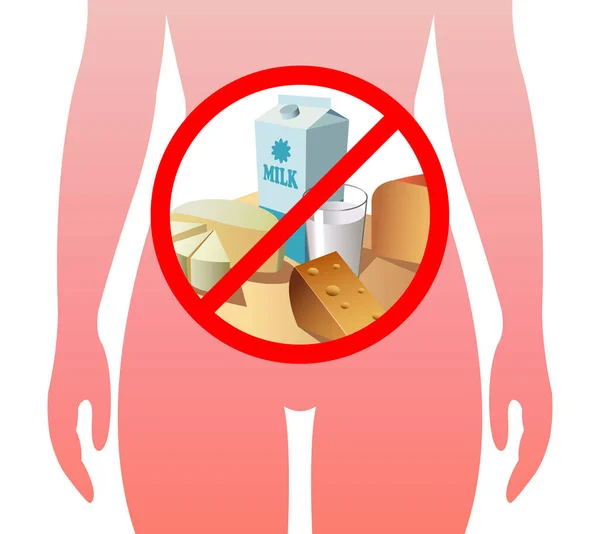 Interestingly, the evolution of lactose tolerance proceeded independently in different populations: different mutations with the same phenotypic effect spread among African, European and Middle Eastern pastoralists (N. S. Enattah et al., 2008. Independent Introduction of Two Lactase-Persistence Alleles into Human Populations Reflects Different History of Adaptation to Milk Culture).
Interestingly, the evolution of lactose tolerance proceeded independently in different populations: different mutations with the same phenotypic effect spread among African, European and Middle Eastern pastoralists (N. S. Enattah et al., 2008. Independent Introduction of Two Lactase-Persistence Alleles into Human Populations Reflects Different History of Adaptation to Milk Culture).
The most common allele responsible for lactose tolerance in Europeans is rs4988235-A. Earlier it was shown that it did not reach a significant frequency immediately after the appearance of dairy farming in Europe (in southeastern Europe it happened in the Early Neolithic, 8-9 thousand years ago), but much later – in the Bronze and Iron Ages. It was suggested that the steppe people from the Black Sea-Caspian region, who began to migrate westward about 5 thousand years ago, could play a key role in the spread of the allele in the Western European gene pool (see Fig.: Paleogenetics has confirmed the important contribution of the Black Sea-Caspian steppe dwellers to the formation of the gene pool of Europeans, “Elements”, 06/14/2015).
A large international research team reported in the journal Current Biology new paleogenetic data shedding light on the history of the rs4988235-A allele in Europe. The authors managed to isolate DNA from the bones of 14 Bronze Age warriors who died in the battle in the Tollensee valley in northern Germany. This battle, which took place around the 13th century BC.e., – the oldest major battle in European history, known to science. To some surprise of scientists, two of the 14 warriors turned out to be women.
Comparison of genomes did not reveal any population structure in the warriors. This means that all 14 individuals most likely came from the same population, which genetically did not differ much from the modern population of Central and Northern Europe. This result contradicts the earlier stated version that in the Battle of Tollenze the local residents met with aliens from distant lands (maybe from the south or southeast of Europe).
The frequency of occurrence of the lactose tolerance allele (rs4988235-A) in ancient warriors was low: only 7.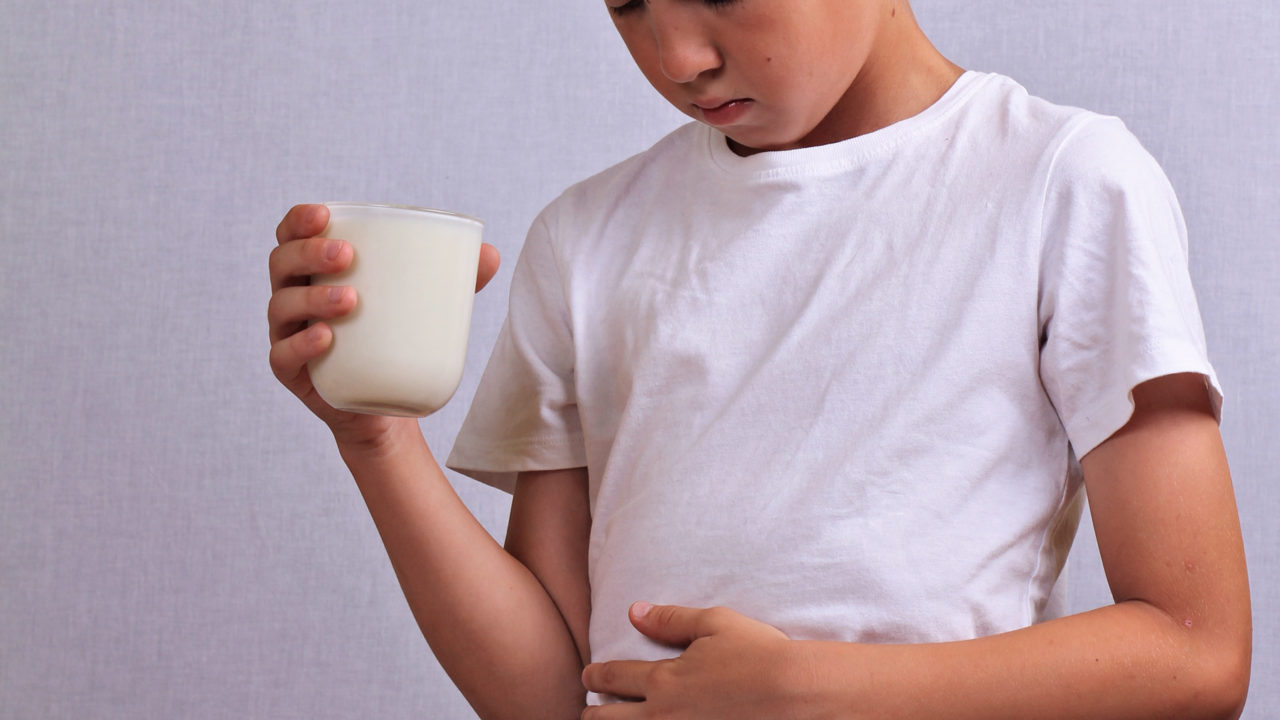 1% (two out of 14 individuals are heterozygous for this allele, see Fig. 1). Approximately the same picture is observed in people of the Early Bronze Age from the Mokrinsky necropolis in Serbia (2100-1700 BC), whom paleogenetics studied earlier, as well as in other European populations of comparable age, for which there is paleogenetic data (as a rule, more scarce than according to Tollenze and Mokrin).For the European Bronze Age, the highest frequency of occurrence of rs4988235-A (29%) was observed in 34 individuals from Liechtenstein Cave in Germany, who were buried there 300–400 years after the Battle of Tollense.
1% (two out of 14 individuals are heterozygous for this allele, see Fig. 1). Approximately the same picture is observed in people of the Early Bronze Age from the Mokrinsky necropolis in Serbia (2100-1700 BC), whom paleogenetics studied earlier, as well as in other European populations of comparable age, for which there is paleogenetic data (as a rule, more scarce than according to Tollenze and Mokrin).For the European Bronze Age, the highest frequency of occurrence of rs4988235-A (29%) was observed in 34 individuals from Liechtenstein Cave in Germany, who were buried there 300–400 years after the Battle of Tollense.
In subsequent eras, the frequency of the lactose tolerance allele seems to have increased rapidly. Eight individuals from Latvia who lived in the VI-VIII centuries BC. e., it is 57%. The same frequency is observed in the early medieval sample from Bavaria (21 individuals, about 500 AD).Finally, in 13 individuals of northern European descent from an early medieval cemetery in Hungary, the lactose tolerance allele occurs with a frequency of 73%, similar to that of modern northern Europeans.
Thus, already in the early Bronze Age, the frequency of occurrence of rs4988235-A in some regions of Europe was high enough for the allele to be found in small archaeological samples. However, it was then still much lower than the values characteristic of later periods and for modern Europeans.
This pattern is consistent with the assumption that selection began to maintain the lactose tolerance allele as early as the Neolithic and continued to do so in the Bronze Age and beyond. Here it should be borne in mind that the mutation frequency, which is continuously affected by the positive selection of the same force, grows along a sigmoidal trajectory: at first very slowly, then ever faster, then again more slowly (the growth of the frequency slows down as it approaches 100%). Apparently, the fastest increase in the frequency of occurrence of the rs4988235-A allele in Europe occurred in the period from the Bronze Age to the early Middle Ages (approximately 4000 to 1500 years ago). However, this does not mean that during this period the selection in favor of the allele was stronger than in the previous and subsequent epochs. It’s just that the sigmoidal curve is designed in such a way that it has a section of the most rapid growth. But this still means that selection has continued to work for the last three to four millennia and has been very strong. The selection coefficient (see Selection coefficient) in favor of the rs4988235-A allele, according to the authors, was about 0.06 (a six percent selective advantage of the lactose tolerance allele over the competing intolerance allele).This corresponds to a very strong selection.
However, this does not mean that during this period the selection in favor of the allele was stronger than in the previous and subsequent epochs. It’s just that the sigmoidal curve is designed in such a way that it has a section of the most rapid growth. But this still means that selection has continued to work for the last three to four millennia and has been very strong. The selection coefficient (see Selection coefficient) in favor of the rs4988235-A allele, according to the authors, was about 0.06 (a six percent selective advantage of the lactose tolerance allele over the competing intolerance allele).This corresponds to a very strong selection.
The authors identified the allelic state of 440 more “phenotypically informative” loci in the studied Bronze Age warriors, including those affecting the immunity and pigmentation of the skin and hair. None of them have been able to detect any signs of the strong selection that has been operating on Europeans in the last 3,200 years (from the Battle of Tollense to the present). Signs of at least some kind of selection were found for only one allele associated with innate immunity.Thus, the recent strong selection for the lactose tolerance allele in Europeans is a special case. According to other monogenic traits, Europeans have not had such a strong selection in the last three thousand years.
Signs of at least some kind of selection were found for only one allele associated with innate immunity.Thus, the recent strong selection for the lactose tolerance allele in Europeans is a special case. According to other monogenic traits, Europeans have not had such a strong selection in the last three thousand years.
Above, the hypothesis was mentioned, according to which the rs4988235-A allele was introduced to Western Europe by steppe migrants from the Black Sea-Caspian region. This hypothesis was based not on direct calculation of the allele frequency in ancient steppe dwellers, but on indirect estimates obtained using complex statistical methods (M.E. Allentoft et al., 2015. Population genomics of Bronze Age Eurasia). These methods may give incorrect results for loci that have recently been subject to strong selection. The authors tested the hypothesis in a more straightforward and reliable way by determining the allelic state of the rs4988235 locus in 37 individuals buried in mounds in the Eastern European steppes in the Chalcolithic and Bronze Age (4000–2300 BC; points inside the dark oval in Fig. 1). No lactose tolerance allele was found in any of the 37 steppe dwellers.
1). No lactose tolerance allele was found in any of the 37 steppe dwellers.
Thus, the results did not support the idea of a significant role of steppe migrants in the rapid spread of lactose tolerance in Western Europe. Moreover, the warriors who died in the Battle of Tollense 3,300 years ago are genetically almost indistinguishable from the modern inhabitants of the region. At the same time, lactose tolerance in the former was much less common than in the latter. The same is true for the Bronze Age people from Serbia.
All this suggests that the rapid spread of the rs4988235-A allele over the past three millennia was determined by selection, not migrations.In other words, people who were able to drink milk without harming their health had a strong reproductive advantage, that is, they left significantly more viable offspring than those who developed digestive problems from milk. In principle, it was clear before that there was such a selection. The new study added two important details: first, it showed that selection was very strong, and second, that it continued until recently, at least until the Middle Ages.
But what was the reason for the selective advantage of people who are able to drink milk without harmful consequences? Several hypotheses have been proposed earlier by different authors.The most obvious consideration is that milk is highly nutritious, and in the old days people rarely suffered from excess calories. However, if instead of milk there is yogurt or cheese, then the problem of lactose intolerance is largely eliminated. Milk could also alleviate calcium deficiency problems in people who lacked vitamin D in their diets and who also lived in high latitudes, where there was little opportunity for “photosynthetic” production of this vitamin by ultraviolet radiation.In addition, there is evidence that drinking milk can change the composition of the intestinal microbiota in a beneficial way for humans, reduce the risk of diarrhea in times of hunger, and even alleviate the symptoms of malaria. Finally, drinking milk could be useful simply because it was a drink that was relatively little contaminated with all kinds of pathogens – in contrast to the not always clean water that Europeans probably had to drink in the old days.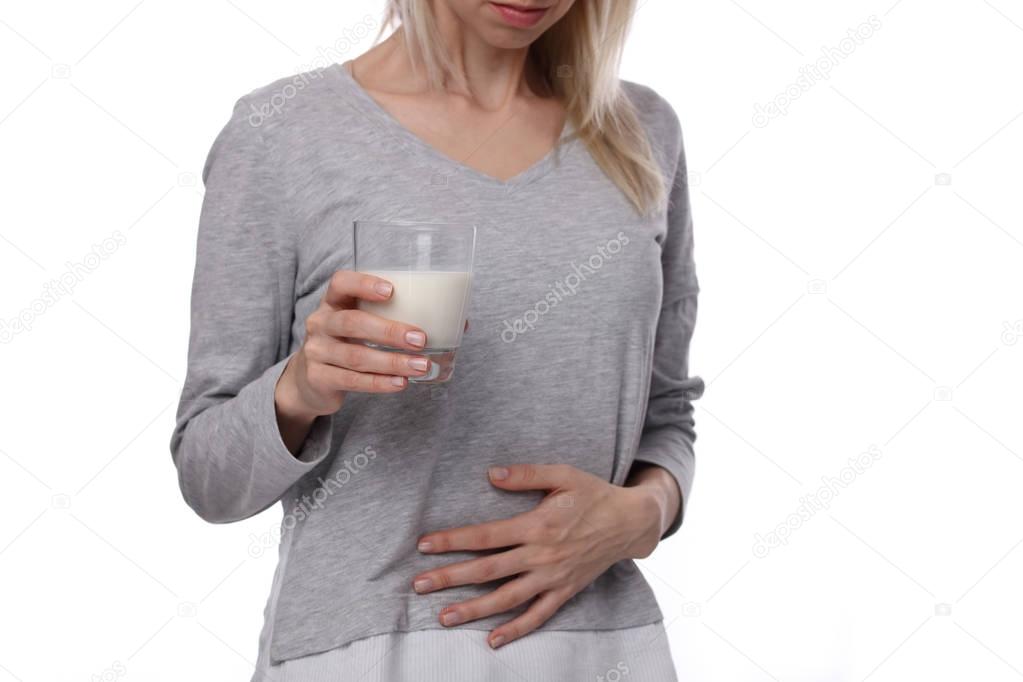
According to the authors, their data are in the best agreement with the latest version.After all, they showed that strong selection for lactose tolerance has continued over the past three millennia. During this time, the density of the European population grew rapidly, which is unlikely to improve the quality of drinking water and reduce the risk of intestinal infections.
In addition, it must be remembered that the process of genetic-cultural co-evolution can be self-sustaining (see: Co-evolution of the brain and culture – a probable mechanism for the formation of the human mind, “Elements”, 25.05.2020). The higher the frequency of the rs4988235-A allele, the more people could drink milk without fear of the consequences. As a result, this eating behavior became more and more common and habitual. Young people copied the elders, and it became more difficult to refuse milk when everyone was drinking it. Thus, biological and cultural evolution could spur each other: the increase in allele frequency contributed to the spread of cultural tradition, which, in turn, contributed to further selection for lactose tolerance.
Source: J. Burger, V. Link, J. Blöcher et al. Low Prevalence of Lactase Persistence in Bronze Age Europe Indicates Ongoing Strong Selection over the Last 3,000 Years // Current Biology . 2020. DOI: 10.1016 / j.cub.2020.08.033.
See also:
Paleogenetics has confirmed the important contribution of the Black Sea-Caspian steppe in the formation of the gene pool of Europeans, “Elements”, 14.06.2015.
Alexander Markov
90,000 Difference between lactose allergy and lactose intolerance
Lactose intolerance
Milk is a product with a double reputation.On the one hand, it is a source of important proteins and useful microelements, on the other hand, it is a frequent cause of adverse reactions.
In particular, milk and milk products can cause allergies and intolerances. These two conditions, which are often confused with each other and considered related, are actually completely different in nature.
Lactose intolerance is characterized by the inability of the body to completely digest milk sugar, which is called lactose.This condition can develop, first of all, due to a deficiency in the body of a special enzyme – lactase.
Lactase breaks down lactose to two simple sugars – glucose and galactose, which are then easily absorbed into the bloodstream.
During infancy, lactase is produced in the human body primarily to help babies digest breast milk.
This is why most babies have enough lactase levels to digest almost a liter of breast milk per day.The enzyme lactase is naturally produced by the cells that line the small intestine. It is also produced by bacteria that live in the small intestine.
However, over time, about 70% of the world’s population stops producing this enzyme. This occurs around the age of 2-3 years. Therefore, later the human body can only digest a very small amount of milk and dairy products. And this is considered a normal condition.
And this is considered a normal condition.
Lactose intolerance is more common in certain ethnic groups, including American Indians, African Americans, and Asians.
Most often, this condition affects the population of Africa (65-75% of the total population) and Asia, where more than 90% of the inhabitants cannot tolerate lactose.
This problem is less common in Northern and Central Europe. Here, lactose intolerance is observed in 2-20% of the population, depending on the region. For example, in Mediterranean countries, the rate of lactose intolerance can reach an average of 40%. In particular, in some regions of Italy this figure can reach 56-70%.
This difference is associated with a genetic mutation, which, as scientists assume, occurred 5-10 thousand years ago.
The ability to digest lactose gave people with the mutation a selective advantage in consuming dairy products. This allowed them to live long enough to have children. At the same time, the ability to assimilate lactose can be genetically passed on to future generations.
Children are rarely diagnosed with lactose intolerance, but a viral infection or reaction to immunization can cause diarrhea when milk-based formula is taken.Since these secondary intolerances are usually short-lived, they often go away on their own and do not require any dietary changes.
In contrast, in adults, lactose intolerance often manifests itself before the age of 20 and requires some nutritional adjustment.
In people with lactose intolerance, part of it remains in the intestine without being absorbed.
This undigested lactose passes into the large intestine. Here it is broken down by bacteria, causing bloating and, consequently, flatulence.In addition, fermented lactose irritates the inner lining of the intestines, causing nausea, vomiting, and diarrhea. In addition, it is a source of toxins.
There is also an opinion in the scientific world that these toxins can cause the development of diabetes, multiple sclerosis, rheumatoid arthritis and some types of cancer.
The main symptoms of lactose intolerance include:
bloating and abdominal pain
nausea
vomiting
diarrhea.
Less commonly, lactose intolerance can lead to headaches and pain in joints and muscles, lethargy, problems with short-term memory, mouth ulcers, irregular heartbeat, depression, and the like.
Typically, symptoms of lactose intolerance appear between 30 minutes and two hours after ingestion of milk or dairy food.
Diagnosis of lactose intolerance
Lactose intolerance can be diagnosed with the following medical tests:
Stool acidity test
This test is often used to diagnose intolerances in infants and children.A stool sample is taken to determine if lactose is hydrolyzed to simple sugars. Fermentation of lactose in the intestine will produce lactic acid, which lowers the pH of the stool.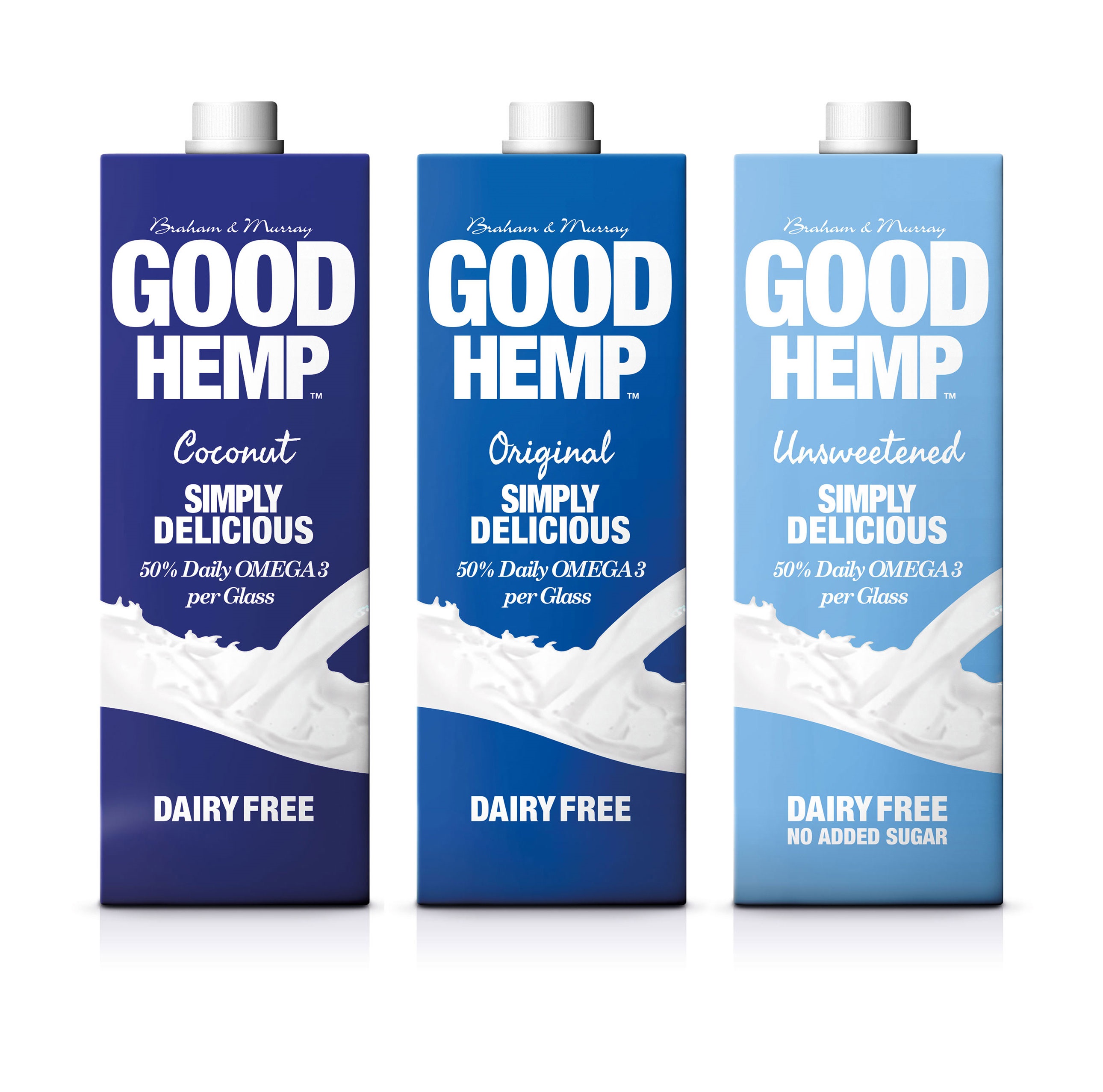
Hydrogen breath test
This is the most commonly used test in which the hydrogen content of a person’s breath is measured after drinking a drink containing lactose. An increase in hydrogen levels indicates that the body is unable to digest or metabolize lactose properly.
Blood test
During this test, the patient is given a drink containing lactose and then a blood sample is taken every 2 hours to check the blood glucose level. If the glucose level does not rise, it means that the person is lactose intolerant.
In the case of a confirmed diagnosis of lactose intolerance, treatment is mainly limited to limiting the intake of lactose. Most people can tolerate the small amount of lactose in about 200 ml of milk (small glass).Therefore, they are advised to minimize, but not completely limit lactose in their diet.
Foods with the highest amounts of lactose are milk, cream, ice cream and yogurt. Yoghurts with added cultures such as acidophilus have the highest lactase activity, so they are easier to tolerate.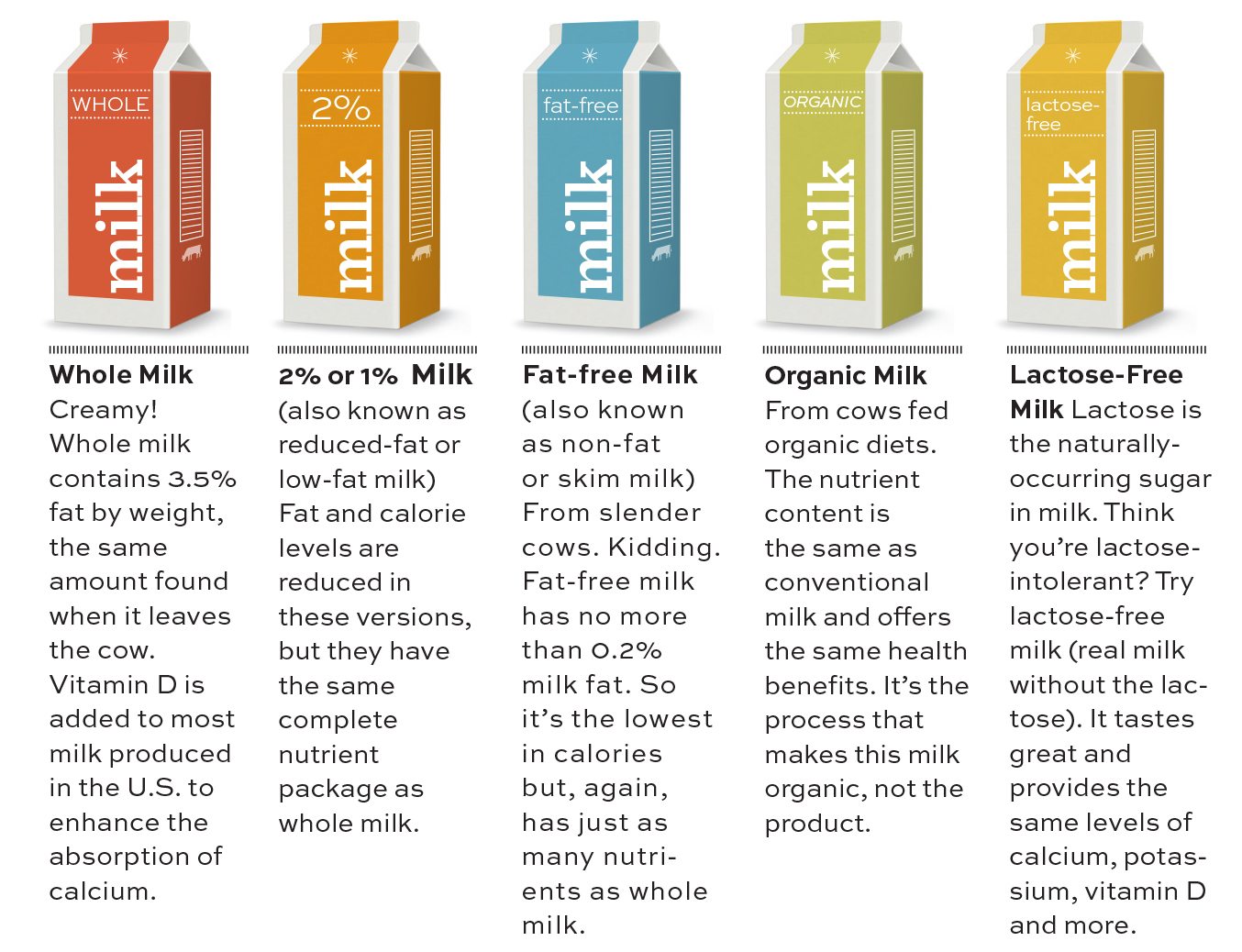
Different cheeses also contain different amounts of lactose. For example, feta and cream cheeses contain more lactose, while matured cheeses such as parmesan, cheddar or camembert are practically free of it.
A small amount of lactose is found in a large number of non-dairy products, as it is often used in the food industry. So, lactose can be added to bread, cereals and instant soups, to salad cream, mayonnaise, cookies, chocolate, chips, to some types of meat products (ham, sausages …).
Today there are special tablets containing the enzyme lactase. They help fight the symptoms of intolerance and help digest lactose.
Milk allergy
In contrast to lactose intolerance, in the case of allergies, there are no specific racial or ethnic groups that show a greater prevalence of this reaction to milk.
Allergies to milk and products containing milk proteins are more at risk for people with eczema, allergies, or those with allergies from their parents.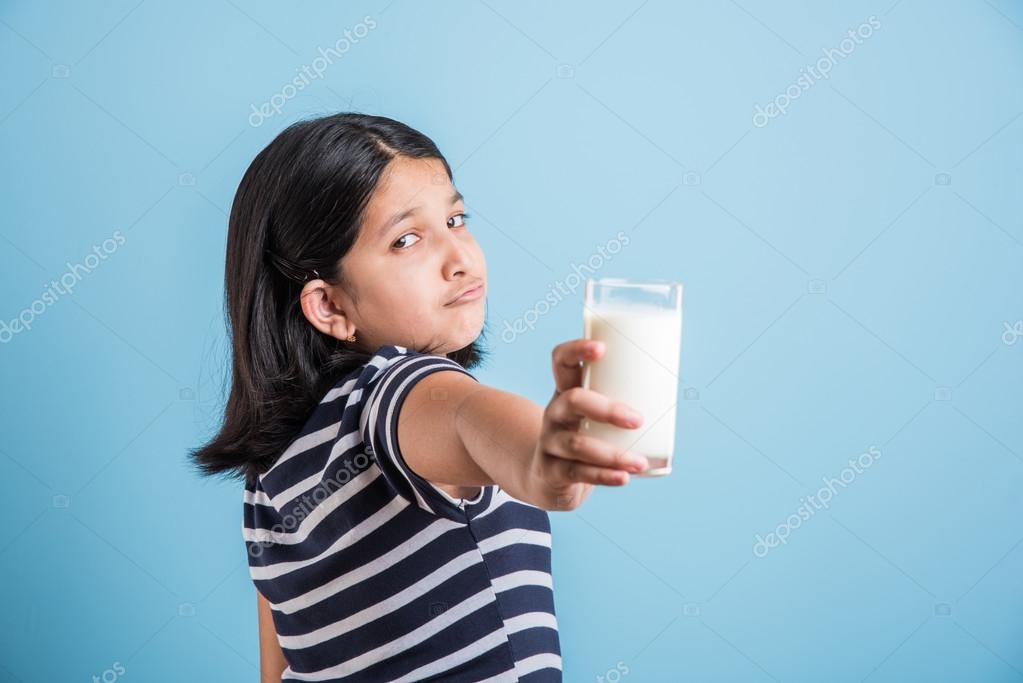
In case of allergies, the immune system is activated. Consequently, a person reacts to the proteins present in milk (mainly casein) by perceiving them as hostile and releasing certain substances to defend against these imaginary enemies.
Proteins in milk bind to IgE antibodies produced by the human immune system after the first episode of an allergic reaction to milk. This binding triggers an immune response. This leads to symptoms that can be mild or very severe.
In this case, the body does not react to lactose. Consequently, individuals with milk allergies can ingest lactose if it is separated from milk proteins, as with some processed dairy products.
Also, unlike lactose intolerance, milk allergy usually occurs early in life. This is the most common food allergy in children. It affects about 2.5% of children under 3 years of age. Among children of the first year of life, this indicator, according to some data, can reach 7.5%.At the same time, many children may outgrow milk allergies before they reach 5 years of age. But this does not mean that such an allergy cannot occur at any time in life, even in adulthood.
However, milk allergy is rare in adults. However, the severity of their reaction can be much stronger than that of children. At the same time, even small portions of a dairy product – up to 0.3 mg of cow’s milk protein – can cause a reaction.
Therefore, as a treatment and prevention, people with milk allergies are advised to avoid milk.Indeed, with prolonged exposure to an allergen, reactions to it can worsen, sometimes becoming life-threatening.
Symptoms of milk allergy
Anaphylactic shock is a rare but severe type of allergic reaction. It can lead to breathing problems, a drop in blood pressure, and heart failure. Usually, anaphylaxis manifests itself as a systemic reaction – that is, one in which several organs are simultaneously involved.
Sometimes milk allergy can lead to severe and unexpected symptoms such as swelling in the mouth or throat, wheezing, coughing, shortness of breath and difficulty breathing.
But in most cases, the symptoms of an allergic reaction are:
itchy rash or edema,
abdominal pain,
vomiting,
colic,
nausea,
diarrhea or constipation,
allergic rhinitis.
Blood in the stool may be observed in newborns.
These symptoms may appear almost immediately or delayed up to 72 hours after consuming a dairy product.
Diagnosis and treatment of milk allergy
To confirm the diagnosis of allergy, the doctor must carefully review the medical history. Sometimes the patient may be tested for lactose intolerance.
Skin test can be done to diagnose allergies. During this procedure, a small drop of liquid containing a milk allergen is applied to the skin. After that, the doctor looks to see if a characteristic reaction to the stimulus appears.
The doctor may also recommend a molecular test for allergy to determine the amount of antibodies to cow’s milk proteins.
A provocative test can also be performed to confirm the allergy diagnosis. That is, the doctor will give you a controlled trial of certain foods that may contain milk and observe the reaction.
If you have a confirmed allergy to cow’s milk, your doctor may also recommend avoiding the milk of other pets.This is because, for example, the protein in goat’s milk is similar to that in cow’s milk and can also cause reactions in people who are allergic to milk.
Avoiding milk, one must remember that it can be “hidden” in a number of seemingly dairy-free products. For example, in caramel, chocolate, sausages, etc.
If you have a severe allergy or have ever had anaphylaxis before, talk to your doctor about purchasing an epinephrine injection auto-injector to help stop or slow this severe allergic reaction if it recurs.
If you are limiting or avoiding milk, good sources of calcium and vitamin A can be foods such as:
- broccoli,
- leafy greens,
- oranges,
- nuts,
- dried beans,
- fish.
Sources of information:
1.https: //www.everydayhealth.com/digestive-health/milk-allergy-vs-lactose-intolerance.aspx
2.https://www.webmd.com/digestive-disorders/lactose-intolerance-or -dairy-allergy
3.https: //www.foodallergy.org/living-food-allergies/food-allergy-essentials/common-allergens/milk
4.https: //www.nutricia.co.uk/hcp/resource -centre / understanding-the-difference-between-lactose-intolerance-and-cows-milk-allergy.html
5.https: //wfmchealth.org/maternity-health-care/the-difference-between-milk-allergy- and-lactose-intolerance /
6.https: //www.newfoodmagazine.com / article / 142533 / milk-allergy-vs-lactose-intolerance / amp /
7.https: //www.lacteeze.com.au/about- lactose-intolerance / lactose-intolerance-v-milk-allergies /? doing_wp_cron = 1618601072.
8.https: //plantbasednews.org/lifestyle/difference-lactose-intolerance-dairy-allergy/
9.https: //www.isitcowsmilkallergy. co.uk/about-cma/what-is-cma/cma-or-lactose-intolerance/
10.https: //www.healthyfood.com/ask-the-experts/dairy-allergy-and-lactose-intolerance /
11.https://www.news-medical.net/amp/health/How-Does-Milk-Allergy-Differ-from-Lactose-Intolerance.aspx
90,000 POSSIBILITIES OF UPPER GIT ENDOSCOPY IN DIAGNOSTICS OF LACTASE INSUFFICIENCY SYNDROME
POSSIBILITIES OF UPPER GIT ENDOSCOPY IN DIAGNOSIS OF LACTASE INSUFFICIENCY SYNDROME
City Consultative and Diagnostic Center # 1
(Head of the Department of Endoscopy I. A. Vasilyeva, Head of the Department of Gastroenterology A.V. Lukyanenko) Ph.D. Asanina L.M., Rezvan T.A., Afanasyeva L.A., Ph.D. Trush O.V.
St. Petersburg
Introduction:
The syndrome of lactase deficiency (lactose intolerance) is a special case of disaccharide intolerance caused by a deficiency of the enzyme lactase and leading to the inability to metabolize sugar lactose.
Normally, all mammals show a significant decrease in lactase production after the end of the breastfeeding period.Hypolactasia in adults is a normal physiological condition after breastfeeding has ceased. In humans, the activity of
lactase of the intestinal mucosa begins to decrease with age, which often leads to the development of lactase intolerance. In this case, after consuming dairy products, clinical symptoms such as abdominal pain, bloating, cramps, flatulence, nausea and diarrhea
appear due to the lack of lactose hydrolysis in the intestine (1). However, in about half of the world’s population, lactase activity remains in adulthood; this part of the population is able to assimilate lactose throughout its life.The retention of lactase production in humans in
adulthood is considered a mutation, it remains unclear – either the continued consumption of milk and its derivatives in food after infancy led to the retention of lactase activity, or the primary preservation of lactase activity made it possible to include dairy products in the diet of an adult. Lactose tolerance is inherited in a dominant manner, often found in populations in whose culture the use of dairy products was formed: so hypolactasia occurs only in 15% of the European population, in 80% of the
Latin American population, and reaches 100% in Asians.(2)
There are 3 forms of lactase deficiency:
• Congenital – complete absence of lactase due to a genetic defect (extremely rare)
• Primary – most common in the adult population when lactase deficiency develops after breastfeeding ends.
• Secondary – developing after intestinal infections, due to celiac disease, with damage to the villi of the mucous membrane of the small intestine.
Normally, in the villi of the mucous membrane of the small intestine, milk sugar lactose, under the action of the enzyme lactase, is split into monosaccharides – glucose and galactose for their subsequent transport across the cell membrane of the enterocyte.The enzyme activity and the time of transport of sugars across the cell membrane affect absorption. Hypolactasia leads to the fact that a significant part of the lactose disaccharide passes unbroken through the small intestine and enters the large intestine. Unabsorbed sugar due to enzyme deficiency attracts water into the intestinal lumen, which leads to the development of osmotic diarrhea. In addition, in the large intestine, lactose is actively metabolized by intestinal bacteria, which have their own lactase, with the release of a large amount of gases into the intestinal lumen.(2)
The clinical picture of lactase deficiency consists of symptoms of stool disorders such as diarrhea, flatulence, abdominal pain, as well as a possible malabsorption syndrome with a deficiency in the body of calcium, potassium, vitamin D and B12. The severity of symptoms varies widely depending on the degree of enzyme deficiency and the amount of milk consumed. Diagnosis of lactase deficiency is based on the following studies:
1. Serological – determination of blood glucose levels after loading with lactose.
2. Respiratory – determination of the amount of hydrogen in the exhaled air after consuming lactose.
3. DNA test.
4. Biochemical determination of lactase activity in a homogenized biopsy specimen from the duodenal mucosa.
The above diagnostic methods are not without drawbacks – the serological method gives up to 20% false results due to variations in gastric motility and glucose metabolism. The breath test is based on the fact that ingested and undigested lactose is decomposed by bacteria in the colon, producing hydrogen, which is absorbed into the bloodstream and excreted by the lungs.The composition of the intestinal flora is very variable, depending on external factors – taking antibiotics, aspirin, smoking, etc., which negatively affects the accuracy of the respiratory method. DNA testing is expensive. Biochemical determination of lactase activity in a homogenized biopsy specimen of the duodenal mucosa is considered the gold standard for diagnosing lactase deficiency, but this method requires a specially equipped laboratory.
At present, a new method has been developed for the rapid diagnosis of hypolactasia during endoscopic examination.The method is based on incubation with lactose of a biopsy sample obtained during endoscopy from the postbulbar part of the intestine. The method has high sensitivity (91%) and specificity (94%)
The aim of this work was to study the possibility of improving the diagnosis of pathology of the small intestine associated with the lack of activity of the enzyme lactase.
Objectives: To study the possibility of using an express test for the diagnosis of lactase deficiency during endoscopic EGD – examination of outpatients.
Patients and Methods: The clinical picture of lactase deficiency is characterized by unstable stools, flatulence, and abdominal pain. Similar symptoms occur in patients diagnosed with irritable bowel syndrome (IBS) with a tendency to diarrhea. Taking into account the objectives of the study, after consulting a gastroenterologist, 18 patients with IBS with diarrhea were randomized into 2 groups.
Patients of group 1 – 9 people – noted intolerance to milk and dairy products.These patients did not consume dairy products or developed symptoms related to their use (study group).
Patients of group 2 – 9 people – consumed dairy products and did not associate the presence or intensification of symptoms with milk intake (control group).
All patients underwent a general clinical examination, which included fecal analyzes, clinical and biochemical blood tests, ultrasound examination of the abdominal organs, EGDS with chromogastroscopy and urease test for helicobacteriosis, colonoscopy or sigmoidoscopy with biopsy.The indication for EGDS in patients of both groups was the presence of dyspepsia syndrome and diarrheal syndrome. In addition to the routine biopsy from the mucous membrane of the antrum and corpus of the stomach, a biopsy was performed for microscopy of the mucous membrane of the postbulbar part of the 12th intestine and a biopsy was taken from the postbulbar part of the 12th intestine to perform an express test for lactase deficiency.
We used a rapid test for the diagnosis of lactase deficiency from Biohit, Helsinki, Finland.This express method will allow using a visual analogue scale to qualitatively determine the activity of the lactase enzyme in a biopsy fragment immediately after endoscopy. (Table 1)
The test consists of three reagent bottles and a plate with a color scale. When the biopsy material is incubated in the plate for 20 minutes, a certain color reaction develops. Comparing the color intensity of the resulting solution with the color scale on the tablet, the degree of lactase deficiency is determined.
The test was carried out according to the manufacturer’s instructions. A biopsy specimen from the mucous membrane of the postbulbar part of the duodenum was placed in the well of the plate and reagent solutions were added in the specified volume and after a specified time. Reaction at room temperature. The total test time is 20 minutes. The recommended size of the biopsy sample is 1.5-2.0 mm; before the test, blood is removed from the biopsy sample by placing it on a sterile gauze pad. The test was performed immediately after the completion of the gastroscopy.
Table 1
Visual-analogue scale for the determination of lactase activity in a biopsy fragment
| Severe hypolactasia (severe) | Severe lactase deficiency – lactase activity less than 2μmol / min / g protein | |
| Moderate hypolactasia (Mild) | Lactase activity 2-10 μmol / min / g protein | |
| Standard | Lactase deficiency can be excluded (lactase activity more than 10 μmol / min / g protein |
Results
In group 1, in patients with a history of milk intolerance, normolactasia was diagnosed in 1 patient, moderate hypolactasia (Mild) – in 2 patients, severe hypolactasia (severe) – in 6 patients.
In group 2, in patients with no history of intolerance to dairy products, normolactasia was diagnosed in 4 patients, moderate hypolactasia (Mild) in 3 patients, severe hypolactasia (severe) in 2 patients. The results are shown in Table 2.
Table 2
Results of an express test for lactase deficiency in the examined groups of patients
| Groups | Results of a rapid test for lactase deficiency | ||
| Norm | mild | severe | |
| Examination group N = 9 | 1 | 2 | 6 |
| Control group N = 9 | 4 | 3 | 2 |
where -Mild – moderate hypolactasia, Severe – severe hypolactasia
Table 1 shows that among patients with a history of milk intolerance, hypolactasia of varying severity was diagnosed in 8 out of 9 people.Among the group of patients with no history of milk intolerance, hypolactasia was detected in 5 out of 9.
In the presence of signs of lactase deficiency of varying severity (13 people in 2 groups), in 10 patients – endoscopically pathological changes in the mucosa of the postbulbar parts of the intestine were not detected, in 3 patients the endoscopist characterized the changes in the mucosa as manifestations of chronic duodenitis of moderate activity …
In the analysis of the morphological picture of the mucous membrane of the bulbous section 12p.intestines in the same patients, all patients were diagnosed with histological signs of chronic duodenitis of varying degrees of activity, while in 2 patients of the control group, in the presence of signs of moderate hypolactasia and in the absence of a history of milk intolerance, changes were revealed suspicious of celiac disease.
Discussion:
The results of the study allow us to conclude that the anamnestic data do not allow to reliably speak about the presence or absence of lactase deficiency.So among the patients who indicated good tolerance to milk and dairy products, manifestations of hypolactasia of varying degrees were detected in more than half (5 people out of 9). Do not forget about the possibility of secondary lactase deficiency in these patients, when the manifestations of hypolactasia may be associated with the concomitant pathology of the villi of the small intestine. It is possible that hypolactasia may accompany chronic diarrhea of a different etiology, be mixed, or be transient. The answers to these questions require more in-depth research.It should be noted the complexity of endoscopic diagnosis of chronic duodenitis – so, visually, in 10 patients out of 13 patients with signs of lactase deficiency, the picture of the 12th intestinal mucosa was assessed by the endoscopist as normal, although in all cases, histological signs of chronic duodenitis of varying severity were revealed. These data allow us to speak about visual underdiagnosis of duodenitis and the need for histological verification of the state of the mucous membrane of the small intestine in patients with diarrhea.In addition, when performing duodenoscopy, one should not forget about other diseases that occur with damage to the villi of the small intestine and lead to secondary hypolactasia, for example, celiac disease and Whipple’s disease.
Analyzing the results of the examination, it can be concluded that the observed group of IBS patients is heterogeneous. So, 1 patient was diagnosed with the debut of ulcerative colitis, 2 patients were suspected of having celiac disease, and in 1 case chronic atrophic gastritis of type A was suspected.
The obtained data show that the rapid test for lactase deficiency from Biohit, Helsinki, Finland, is easy to use, allows a good differentiation between severe hypolactasia and normal lactase activity. Some difficulties arise when assessing test results with moderate signs of hypolactasia, which requires the accumulation of experience and always implies an assessment of laboratory results in combination with the clinical picture.
Conclusions:
Rapid test for lactase deficiency from FINLAND BIOHIT is convenient for use in endoscopic practice.The test does not require additional preparation of the patient; it is carried out using standard endoscopic equipment and does not lead to an increase in the examination time.
Rapid test for lactase deficiency of the company “BIOHIT” FINLAND expands the diagnostic capabilities of EGDS – examination at the outpatient stage and allows you to improve the diagnosis of diseases of the small intestine in patients with chronic diarrhea.
The results obtained using the rapid test should be considered in comparison with the clinical picture.
Conclusion:
The diagnosis of diseases of the small intestine is still a difficult task. The use of an endoscopic express test for lactase deficiency, today, is the most accessible, reliable and inexpensive method for diagnosing lactose intolerance, increases the value of routine EGD – examination, expands the possibilities of diagnostic search for a clinician.
Primary care physicians and gastroenterologists should be better acquainted with the diagnostic capabilities of modern endoscopy, since only together with clinicians it is possible to conduct a competent diagnostic search in patients with chronic diarrhea.
References:
1. Daniel L. Swagerty, Anne D. Walling, Robert M. Klein Lactose Intolerance “American Family Physician”, May 01 2002.
2. Praveen K Roy, Julian Katz, Lactose Intolerance, Medscape reference. WebMD professional.
Lactose: benefits and harms, intolerance in adults and children. Lactose: where it is contained, the benefits and harms of
What is lactose?
Lactose is a disaccharide composed of two simple sugars: galactose and glucose.More and more symptomatic yogurt drinkers are asking their healthcare professionals, “Is there lactose in fermented milk products?” – Yes, lactose is found naturally in yoghurt and also in dairy products such as:
- cow and goat milk
- buttermilk
- cream
- whipped cream
- butter
- dairy offal
- serum
- curds
- milk powder
- processed cheese
- kefir
- soft cheese
- hard cheese
- sorbet
- ice cream
- malt milk
- hot chocolate mixes
Another increasingly common question from patients, is there lactose in cottage cheese? No, but goat milk has slightly less lactose (9 grams per cup, compared to 12 grams in cow’s milk).
These diligent, health conscious patients are thrilled to hear that instead of obsessively avoiding this disaccharide and wondering every time whether kefir or cream contains lactose, they can simply let their bodies process it.
What makes
Lactose can be made from whey in a process similar to the production of cheese from the by-product of cheese making, casein. The fermentation of lactose by microorganisms such as Lactobacillus acidophilus is part of the industrial production of lactic acid.
Products containing lactose, the list of which is topped by the only natural source of significant amounts of lactose – products from mammalian milk. Therefore, the raw material for their production is always whey or whey permeate.
Whey protein is a valuable asset, which is why lactose is currently produced using whey permeate as a starting material. Whey permeate contains 5 to 6% solids, typical dry-based formulations are 85% lactose, 10% ash and 3% protein.
Production of lactose from whey permeate consists of the following steps:
- Concentration. Usually produced by repeated evaporation. In some cases, the permeate is pre-concentrated using reverse osmosis, and concentration together with partial demineralization can be carried out using nanofiltration.
- Crystallization. Carried out by cooling from a supersaturated solution. As an alternative, precipitation with alkaline earth metals (Steffen process) and alcohols has been proposed.
- Extract. Lactose crystals are recovered by decantation or centrifugation. Then the mother liquor containing most of the minerals and about 20% lactose is removed.
- Drying. Lactose crystals containing 5–12% moisture are finally dried in dryers.
- Cleaning. Depending on use, further cleaning may be required. Food grade lactose does not require polishing operations, but pharmaceutical lactose requires refining.This includes re-dissolving lactose crystals, treating the solution with activated carbon to absorb a range of solutes, including riboflavin, removing traces of residual proteins, and recrystallizing.
Lactose is synthesized in mammalian mammary glands. Animal milk contains an enzyme called lactose synthetase, which acts on the compound uridine diphosphate D-galactose to form lactose. The compound is obtained commercially from whey, a by-product of the cheese making process.
Whey solids contain about 70% by weight lactose. These solids are filtered to remove the proteins they contain. After removing the minerals in the serum, the resulting solution contains about 50 to 65% by weight, which allows crystallization from the resulting solutions.
The lactose obtained in this way is a racemic mixture of the D and L isomers. To obtain the alpha isomer, lactose is dissolved in water and treated with activated carbon to remove any color.When water evaporates from solution, α-lactose monohydrate remains.
The product is most commonly available in this form. To obtain the beta isomer, α-lactose is heated with water in the presence of a base, which converts the alpha isomer to the beta form.
Does a person need lactose?
The carbohydrate lactose is added to almost all industrially manufactured food products. Lactose gives bread fluffiness and gives a beautiful crust, improves the taste of sauces and sausages, is indispensable in sweets and margarine, infant formula.
In addition to providing energy to the body, lactose has other beneficial properties:
- is necessary for calcium metabolism;
- improves nervous regulation, soothes;
- is a nutrient medium for intestinal microflora;
- has a beneficial effect on blood vessels and heart;
- protects against caries.
The main manifestation of lactase deficiency is milk intolerance, when the consumption of dairy products is followed by indigestion.For the first time, lactase deficiency manifests itself in the first year of life, when complementary foods are introduced.
Lactase deficiency in adults has varying degrees of severity. Some cannot tolerate foods even with a minimal content of the substance, others only have an intolerance to fresh milk, and other dairy products are well absorbed. Therefore, the question of replacing products containing lactose is decided individually.
The role of lactose in the body
Scientists often talk about the benefits of lactose, but they also note milk sugar.It is really important for the functioning of internal organs, as it supports vital functions. Everyone knows that after milk or dairy products, saliva becomes more viscous. It is impossible to imagine how natural salivation would work without lactose.
Lactose also promotes the absorption of vitamins B and C, as well as calcium. With the help of milk sugar, lacto- and bifidobacteria actively multiply, and the microflora normalizes in the intestine.
After penetration into the body, lactose is not absorbed, but is broken down.The result is galactose and glucose, but this requires the enzyme lactase. Milk sugar has many beneficial properties, but under certain circumstances it also has a harmful effect on the body.
Characteristics of lactose
Lactose is a natural organic compound that belongs to the group of carbohydrate saccharides. The substance is present in all dairy products, which is why people increasingly call it “milk sugar”. Despite the fact that the existence of lactose was known several centuries ago, its effect on human health has attracted the interest of scientists only recently.This is especially important during the period of feeding newborn babies, who sometimes have an intolerance to the product.
Lactose, after entering the body, is not absorbed, but is split into components – glucose and galactose. This happens under the action of a special enzyme, lactase. The substance, unique in its properties, was found in minimal quantities even in almonds, turnips and cabbage. The chemical has many beneficial properties, which is why food manufacturers are increasingly adding it to their products.
Is lactose harmful or beneficial?
We hasten to assure you that there is no definite answer to this question. For someone, a lactose-containing product will have a beneficial effect and will be extremely beneficial, and for someone it will harm. What’s what, let’s find out.
Let’s start with what milk sugar is for the human body.
So, lactose is:
– energy source. Just as a car will not run without this or that type of fuel, so a person will not be able to live and enjoy life at full power without proper refueling.Such a dressing is milk sugar. It is a specific but important fuel for the human body. Once inside, this oligosaccharide is metabolized and helps release energy. Additionally, it preserves protein reserves. If lactose, like other carbohydrates, is supplied in normal quantities, the body does not have to use proteins for fuel, and they can accumulate in muscle mass. In addition, proteins can easily carry out a number of other tasks no less valuable for the body;
– weight gain intensifier.Not everyone needs to lose weight. Someone has the opposite problem – too low body weight. And the task is to solve the corresponding one – to gain the missing kilograms. What will come to the rescue? Of course, lactose! If calories are consumed in significant amounts, and burned in smaller amounts, this leads to the deposition of their excess in fat form. That is, if lactose is supplied in quantities exceeding the required amount, sugar is transformed into adipose tissue. As a result, the weight increases;
– an assistant for the intestines, which provides both proper support for the intestinal microflora, and has a beneficial effect on the growth processes of lactobacilli, whose functional duties are to prevent putrefactive manifestations in the intestines;
– normalizer of calcium metabolism;
– a strong stimulant that ensures the proper functioning of the nervous system;
– means for preventive measures of ailments of the cardiovascular system.
As you can see, so far there is only benefit and nothing but benefit. What is the harm of lactose? Can it, for all its usefulness, have a bad effect on the body? Maybe, but only if the body itself is not able to assimilate, digest and break down it. This happens when there is a lack of the enzyme lactase.
Who Should Eat a Lactose Free Diet
Lactose is a simple sugar found in milk and dairy products. It is usually broken down by lactase, an enzyme in the small intestine.
However, many people cannot produce lactase, which makes it impossible to digest the lactose in milk.
In fact, it is estimated that about 65% of the world’s population is lactose intolerant, which means they are unable to digest lactose.
In people with lactose intolerance, eating lactose-containing foods can cause side effects such as abdominal pain, bloating, and diarrhea.
Fortunately, following a lactose-free diet can minimize symptoms in people with this problem.
Some people may also follow a lactose-free diet to reduce their dairy intake, which they may wish to do for personal, religious, or medical reasons, or for environmental or ethical reasons.
Others may choose to eliminate lactose as part of a dairy-free diet that is recommended for people who are allergic to proteins in milk, including casein or whey.
Resume:
People with lactose intolerance can follow a lactose-free diet to relieve symptoms.Some people may also eat a lactose-free diet to reduce their intake of dairy products.
Lactose breakdown and its biological role
Lactose is a disaccharide, that is, it consists of two simple sugars – glucose and galactose. When it enters the human body, lactose itself is not absorbed; under the influence of digestive enzymes, it breaks down into separate monosaccharides – glucose and galactose, which are already absorbed into the bloodstream and absorbed by the human body for its benefit.
Lactose, like other carbohydrates, is an irreplaceable source of energy. It promotes the absorption of ascorbic acid, B vitamins and calcium, is the basis for the development of beneficial bifidobacteria and lactobacilli, healthy intestinal microflora.
An enzyme in the digestive tract that breaks down lactose into galactose and glucose is called lactase.
Effects on the body: benefits and harms
Traditionally, it is believed that milk and products based on it are only beneficial for the human body.It is especially necessary for the child’s body in the first months of life, when it is the only source of energy.
Drinking milk is good for an adult as well. Moreover, it is:
- is a source of energy;
- promotes the reproduction and development of beneficial microflora (lacto- and bifidobacteria) in the intestine;
- normalizes calcium metabolism;
- prevents the development of cardiovascular diseases;
- helps to strengthen the immune system;
- has a positive effect on the state of the nervous system.
However, not everyone can benefit from milk. For some, this backfires. They may have:
- flatulence, diarrhea, bloating and uncontrolled gas production;
- nausea and vomiting, abdominal pain;
- allergic manifestations;
- intestinal inflammation.
Interaction with essential elements
Interacts with calcium, iron and magnesium, promoting their absorption.In people with bowel disease and lack of adequate amounts of the enzyme lactase, milk sugar can cause water retention in the body.
Lactose intolerance
Lactase is produced by the microflora of the small intestine, these are non-pathogenic E. coli, lacto- and bifidobacteria. Without the presence of this enzyme in the intestine, the breakdown of lactose does not occur, and it cannot be assimilated entirely by the human body. For some, the enzyme lactase is not produced at all or is produced, but in insufficient quantities.In this case, the undigested lactose remains in the intestine, causing disturbances in the functioning of the gastrointestinal tract.
This pathology also occurs in young children, but with age it is observed more and more often, hence the more frequent statements about the dangers of dairy products for adults.
Lactose intolerance due to the absence of the lactase enzyme should not be confused with another form – casein milk protein allergy.
There are three types of intolerance:
- Primary intolerance occurs with age, when a person consumes dairy products less and less, and the need for the production of the enzyme lactase is reduced to naught.It is more likely to affect people from America, Africa and Asia.
- Secondary manifests itself as a result of acquired diseases and injuries. It can be caused by Crohn’s disease, intestinal inflammation, bowel surgery, ulcerative colitis, and even complications from the flu.
- Temporary occurs in premature babies, and the function of producing the enzyme lactase has not yet been formed.
Lactose allergy
We have not yet fully figured out the question, why is lactose harmful? Its negative effect is also manifested in allergic reactions.Many people think that intolerances and allergies are one and the same, but they are different conditions.
With lactose intolerance, drinking milk can, in the worst case, overcome a minor food poisoning. In the case of allergies, the situation is much more dangerous, and even death is possible.
Everyone should know how lactose allergy manifests itself. The symptoms of this disorder are as follows:
- Difficulty breathing and the appearance of a whistle on deep breaths;
- body rash;
- swelling of the throat;
- swelling of the lips;
- eye irritation;
- inflammation of the mucous membranes in the nose;
- severe coryza;
- nausea and vomiting.
People with lactose intolerance are allowed to take small amounts of milk and dairy products, but in case of allergies, they must be completely abandoned. A dangerous reaction can be triggered by even the smallest dose of milk sugar.
Causes of lactose intolerance
Distinguish between primary and secondary lactose intolerance. In the first case, the cause of intolerance is a congenital, genetically determined deficiency of lactase – most often a lack of this enzyme is observed in persons belonging to the Asian race.
The following factors can influence the occurrence of secondary hypolactasia:
- Any disease that affects lactase-producing cells in the small intestine, such as inflammatory diseases and even influenza;
- ulcerative colitis;
- transferred chemotherapy;
- celiac disease;
- Crohn’s disease;
- surgical intervention in the work of the gastrointestinal tract;
- dysbiosis.
Another type of hypolactasia is especially distinguished – temporary.It is observed in children born prematurely. The reason for the pathology in this case is that the function of producing the enzyme lactase is laid down only at 34 weeks of gestation.
Symptoms of lactose intolerance
Symptoms of lactose intolerance can manifest itself both in the form of discomfort in the stomach (bloating, sharp pains, diarrhea, vomiting), and in the appearance of acne and skin rashes, headaches and dizziness. If these symptoms occur after consuming dairy products, it is recommended to conduct a full clinical test for lactose intolerance.
Note that in most cases, symptoms of such intolerance occur approximately 30-45 minutes after ingestion of lactose-containing foods. The symptoms themselves vary depending on the amount of substance consumed, the motility of the digestive tract, interactions with other foods, the type of dairy product itself, and so on.
Treatment of lactose intolerance
With a confirmed diagnosis of the absence or deficiency of the enzyme lactase, the doctor can:
- prescribe the missing enzyme in the form of tablets or drops;
- , if it is necessary to treat other diseases, prescribe drugs that do not contain lactose;
- Prescribe a balanced diet.
Medicines for assimilation of lactose
While lactose intolerance cannot be completely cured, you can help your body digest it. For example, there are dietary supplements and special preparations containing lactic and zu (an enzyme necessary for the digestion of lactose). Various probiotics can also be helpful for the normal absorption of lactose.
Similar drugs are taken immediately before meals – in the ideal case, both lactose itself and an enzyme that allows the body to break down and digest it should be present in the stomach.It is also important that preparations with lactic and zoi can also be used in baby food, helping the young body to digest dairy products.
Diet for lactose intolerance
Many find it difficult to give up milk in coffee and cereals. In this case, doctors advise including dairy products in the diet, which contain fermented lactose, which does not cause unpleasant symptoms after a meal. These include primarily hard cheeses and unpasteurized yoghurt.Ordinary cow’s milk can be replaced with soy or almond milk, they are equally beneficial.
The list of products permitted for lactase deficiency includes the following:
- eggs;
- raw fish;
- soy beverages;
- vegetable oil;
- lard;
- all fruits and vegetables without exception;
- nuts;
- tea and coffee;
- honey;
- sugar and saccharin;
- legumes;
- breads without whey;
- pasta without food additives.
Important! Many people with a lack of lactase switch to skim milk, but this does not mean that there is no lactose in it.
Features of the selection of products for lactose intolerance
When composing a diet for lactose intolerance, you need to remember about the following nuances:
- It is not necessary to give up milk, it is enough to purchase its adapted analogue, which does not contain milk sugar. The product, contrary to popular belief, is absolutely harmless to adults and children.Moreover, it contains all the other substances necessary for the body.
- Do not give up the most common hard cheeses. They are well tolerated by the body and with a lack of lactase. But in the case of soft cheeses and cottage cheese, you will have to look for specialized products.
- It is important to remember that the fatter the product, the higher the lactose index in it. But the longer it ripens, the less milk sugar remains in it.
- If desired, today you can find cream, yoghurts and other lactose-free fermented milk products.They taste no different from traditional counterparts, so there is no need to deny yourself your favorite ingredients of the diet.
If you carefully study the properties of lactose, it becomes clear that the body needs it at all stages of its development. Do not think that milk should be drunk only in childhood, during the formation of the skeleton and teeth. For adults, it is equally necessary to stimulate brain activity and a surge of energy. In old age, it is advisable to reduce the volume of consumed products, but you should not abandon them completely if there is no indication for this.
Signs of excess lactose in the body:
- symptoms of general poisoning of the body;
- allergic reactions;
- bloating;
- loose stools or constipation.
Lactose deficiency – causes and consequences
If all of the above is relevant to you, then there is an explanation. The reason may be heredity or individual characteristics of your body, but as a result, an insufficient amount of the enzyme lactase is produced, which breaks down lactose into 2 components – glucose and galactose.They are absorbed by the small intestine.
If the amount of lactase is insufficient, then it is retained in the intestine and binds the required water. The result is diarrhea, and other symptoms: disturbances in the digestive system, headaches, even a harmless cup of coffee with milk can cause bloating, flatulence.
This is milk sugar, which has not been broken down into the necessary components, and causes fermentation in the intestines. In this case, you are faced with lactose deficiency or hypolactasia.
Elderly people and small children suffer the most from this disease. In adults, this is due to the fact that the body ceases to need a large amount of lactose. And in children, the disease is caused by a hereditary predisposition. Also, different ethnic groups have completely different attitudes towards milk. This disease eventually leads to lactose intolerance.
Foods rich in lactose
Indicated approximate quantity (g) in 100 g of product
| Women’s milk | 7 | Cow’s milk | 4.7 | Yogurt | 3.5 | ||
| Ice cream | 5.8 | Curdled milk | 4.1 | Milk whey | 3.4 | ||
| Kumis | 5.4 | Cream | 3.8 | Sour cream 20% | 3.2 | ||
| Buffalo milk | 5 | Buttermilk | 3.7 | Curd | 1.4 | ||
| Goat’s milk | 4.8 | Kefir | 3.6 | Butter | 1 |
How to determine lactose in food
If you are unsure if a particular product contains lactose, checking the label can be very helpful.
Look for added milk or dairy products that might be listed as milk powder, whey, or milk sugar.
There are also other ingredients that indicate the product may contain lactose:
- butter
- buttermilk
- cheese
- condensed milk
- cream
- curd
- goat milk
- lactose
- malt milk
- milk
- milk by-products
- casein
- milk powder
- milk sugar
- milk powder
- sour cream
- serum
- whey protein concentrate
Note that despite the similar name, ingredients such as lactate, lactic acid and lactalbumin are not related to lactose.
Resume:
Checking the label for added milk or dairy products can help determine if a product may contain lactose.
Table of lactose content in dairy products
The lactose food list includes a variety of foods. The milk sugar content is shown in the table:
A significant carbohydrate content is observed in powdered milk.
Products containing milk sugar differ in different values of the indicator.This should be taken into account in case of lactase deficiency
Rules for the use of products with lactose
Lactase intolerance occurs in every fourth person in Russia. It is noteworthy that in Asia the figure reaches 90%.
Insufficient breakdown of milk sugar has several variations. In most cases, the intolerance refers specifically to whole milk. This means that you can eat other foods that are natural or artificial sources of lactose.
Several arguments in favor of milk sugar
In spite of everything, lactose is needed:
- when feeding babies;
- for calcium absorption;
- development of healthy intestinal microflora;
- immunity support and antibody production;
- prevention of oncology;
- rapid wound healing;
- prevention of cardiovascular diseases;
- the correct functioning of the nervous system;
- protection against negative conditions at work, etc.d.
Areas of use
- Lactose acts as a filler in the production of pharmaceuticals.
- It is in demand in microbiology, it serves as a breeding ground for bacteria in the process of various studies.
- Sweets, chocolate, baked goods, condensed milk, ice cream, semi-finished meat products and many other products of the confectionery, dairy and meat industry cannot do without lactose in the composition.
- Is one of the most important components of baby food (dry mixes) and milk replacers.
- Manufacture of flavoring, aromatic and other additives. Lactose is used as a carrier, for example, a dye is mixed with it to make it more convenient to dispense it.
Lactose in the food industry
In the food industry, lactose is used not only in dairy products. The carbohydrate is used as a food additive, as a filler for bakery products and pastries, creams, cakes and ice cream, jam and sausages.
It is added to products along with ordinary sugar, in meat products it eliminates bitter aftertaste and reduces salinity, extends the shelf life.Also used in the production of vodka to soften the taste.
Adding lactose together with sugar to preserves, jams, candies and marmalade enhances and emphasizes the taste of the product. In addition, it is used for the manufacture of flavoring and aromatic additives.
Benefits of using lactose
- Economic benefit by increasing the volume of production
- Significant improvement in consumer characteristics of products
- The ability to reduce the consumption of sugar in recipes, which means to make products more dietary
- Increase in nutritional value and biological value
- Extension of shelf life
- Convenient powder format for easy dispensing
- Does not need special storage and transportation conditions.
Other applications
Lactose is widely used in pharmacology. It is a necessary component for the production of lactulose, a laxative, and is also used in the production of dietary supplements used for the prevention and treatment of dysbiosis. In the production of penicillin, it is used as the basis for the culture medium.
Recently, much has been revised and questioned. It turned out that milk and its constituent lactose are contraindicated in some people.Despite this, for the majority, it remains an irreplaceable and useful source of energy and health.
What is boiled milk sugar?
Boiled milk sugar korda was one of the most favorite Soviet desserts. A delicacy is prepared from a minimum amount of products. You can cook a treat according to your grandmother’s recipe even with a catastrophic lack of free time. And the taste of the finished sweet product is not inferior to purchased delicacies from confectionery factories.
- Milk sugar is more commonly seen as an independent dessert. However, a delicious sweetness can brighten baked goods or complete a birthday cake.
- As the name suggests, boiled milk sugar is based on three ingredients: sugar, milk and butter. The rest is the result of experiments and taste preferences of households.
What is boiled milk sugar
How to cook milk sugar in milk: a recipe like in childhood
Dessert products:
- 200 ml milk
- 3.5 cups sugar
- 140 or 200 grams of peanuts (you can take half a glass of different nuts)
- butter – about 80 grams
Cooking process:
- It will take no more than 10 minutes to prepare products for the preparation of this delicacy.But for the dessert itself, you need to allocate an hour of free time.
- Believe me, the result is worth it and you will not regret that you had to stand at the stove instead of watching your favorite show or another melodrama. Let’s get down to the mystery of making a dessert from the distant 70s.
- Let’s prepare a container in which we will cook the dessert. This can be a saucepan or a round stainless steel ladle. We measure out three glasses of granulated sugar and pour into a container. We will need the remaining 0.5 cups of sugar for further cooking.
- Pour sugar into a container with a glass of milk and send it to the stove. We turn on a small fire. We warm up the liquid, stirring all the time.
Pour sugar in a container with a glass of milk and send it to the stove
- While the milk and sugar is heating on the stove, fry the whole portion of the peanuts. Pour the nuts into the pan. Stir or shake constantly. The peanuts should turn golden. After frying, the films from the peanuts should peel off easily. The process will take about 30 minutes.This time will be just enough for the milk sugar to boil down to the desired thickness.
We check if the sherbet is ready, the old grandmother’s way: put a little syrup in a spoon and drip onto a plate
- Let’s add a rich brown color to the milk sugar. To do this, we need the same 0.5 cups of sugar remaining aside. Take a small frying pan and pour the sugar onto the surface. Melt and fry the white sand a little.
- Now we send the contents of the small frying pan to the container with the milk-sugar syrup.Stir the ingredients thoroughly.
Pour the sugar mass into the mold
- If you want a darker color in the finished treat, hold the sugar in the pan until it’s overcooked, but not black.
- We keep on low heat for another 20 minutes. We check if the sherbet is ready in the old grandmother’s way: put some syrup in a spoon and drip it onto a plate. A spreading drop indicates that the dessert needs to be cooked a little longer. As a rule, sherbet “ripens” on the stove for about an hour.A few minutes before the container with the syrup is removed from the heat, add the butter and stir.
- This is not yet the end of the preparation of the sweet treat: we are preparing a mold in which the sherbet will solidify. Any dish will do: a plate, a shallow bowl. The main thing is that it is convenient for you to extract the sherbet later. You can take a baking dish, lay inside. Grease the parchment with butter.
- We take out the roasted peanuts (you haven’t forgotten about them, have you?) And put them on the bottom of the mold.Pour the milk-sugar mass on top. We take it out to a cool place (or leave it in the refrigerator after cooling). The syrup should be completely set.
- When the whole family is assembled, we serve a treat for tea, after cutting or splitting into small pieces.
When the whole family is assembled, we serve a treat for tea
Classic Milk Sugar Recipe
- 1 glass of cow’s milk;
- 3.5 cups of sugar;
- 1 Art.a spoonful of butter.
Preparation:
Before starting the preparation of the treat, please be patient, as the sugar takes a long time to cook. It will take 25-40 minutes, although 35 minutes is usually sufficient. Choose deep dishes – when heated, the volume of food increases by 4-5 times. A saucepan with a volume of 3.5 – 4.0 liters is ideal. Better to have a small margin.
Fill a saucepan with milk and sugar. Put the dishes on the fire.Wait for the liquid to boil. Then reduce the heat and cook the sugar, stirring occasionally with a spoon. Watch carefully to prevent the mixture from escaping. After about half an hour, the sugar will turn creamy and then brown. After half an hour has passed, start stirring the mixture constantly as the cooking will end soon. When a layer of boiled sugar begins to appear on the surface of the walls, add 1 tablespoon of butter. Continue cooking for about 3 to 5 minutes.
Grease prepared flat plates with butter and add boiled sugar.If you plan to prepare a treat with walnuts, first place the kernels on the surface of the plates. Pour sugar over the nuts. Leave the treat to cool at room temperature. Cut the frozen mass with a knife to make several servings. Or just break it with your hands. Self-made milk sugar will be an excellent addition to tea drinking, since its taste is similar to expensive factory sweets.
How to cook milk sugar with cream
If you want to get a thick consistency that will spread well, it is recommended to use cream during cooking.The finished mixture can be used to decorate various confectionery products.
Take:
- 300 ml cream with a fat content of 33% or more;
- 2.5 cups sugar;
- 1 spoonful of bee honey;
- 50 g butter.
Preparation:
- Make the sorbet first. Fill a deep bowl with cream. Add granulated sugar. Put the cookware on low heat and stir constantly. Bring the sweet liquid to a boil.
- Add a spoonful of honey and cook for about 20 minutes.
- In the meantime, prepare the molds. Lubricate the walls with butter to avoid sticking. Fill the molds with sweet syrup to the brim. After hardening, cut the mixture into small cubes with a knife.
If you are going to make a sherbet for a cake, leave the mixture to set. To secure the decoration to the surface of the pastry, cut out the figurine using a mold. Then heat the edges slightly so that they fit snugly against the baking surface.
How to cook boiled sugar with sour cream: recipe
Adding sour cream will give the boiled sugar dessert a unique taste and aroma, reminiscent of the most “delicious” moments of childhood. A delicacy based on sour cream has another name: milk fudge. If you want to improve grandmother’s technology for making sweets, add cocoa, nuts, seeds to the recipe.
To prepare milk fudge you will need the following components:
- 0.5 kg sugar
- a glass of fat sour cream
- 50 g butter
- 1 tablespoon cocoa (optional)
Cooking process:
- We will cook the treat in a refractory container with a non-stick coating.If you prefer to recreate in your kitchen the way of making dessert, which was tested by our grandmothers, then prepare an enamel saucepan or bowl.
- Pour the entire portion of sugar into a preheated container, add sour cream and, if you decide to make a dessert with nuts or seeds, then add these ingredients.
- Stir the contents of the saucepan until the mixture boils. Reduce heat and leave the syrup on the stove for another half hour.
- After 30 minutes, the sweet mass will acquire a beautiful caramel shade, and its thickness will be optimal for dessert.Stirring constantly will prevent lumps from forming. It is not worth continuing to cook the sweetness after 30 minutes: the syrup can curdle and become tough.
- Stir the contents of the saucepan, throw in the butter (the amount of butter specified in the recipe). After the butter has melted, the caramel mass can be filled with oiled molds and taken to a cool room. Take the finished sweetness out of the mold and cut it into pieces.
Helpful hints
Natural yoghurt helps to increase the enzymes that break down milk sugar.This allows you to minimize and smooth out the consequences of lactase deficiency. The medical solution to pathology consists in the use of special drugs.
Conclusion
Disputes about the benefits and harms of lactose have been going on for a long time, but so far there are many more supporters of the idea that this carbohydrate is useful than harmful than opponents. The beneficial properties of lactose are difficult to overestimate: it is recommended for use by both children (after consulting a pediatrician) and elderly people, and the benefits from it are incomparably greater than the harm.Finally, it is useful for type 1 and type 2 diabetics, acting as a kind of sugar substitute.
.

 If the symptoms reappear once the foods are reintroduced, then lactose intolerance is most likely the cause.
If the symptoms reappear once the foods are reintroduced, then lactose intolerance is most likely the cause.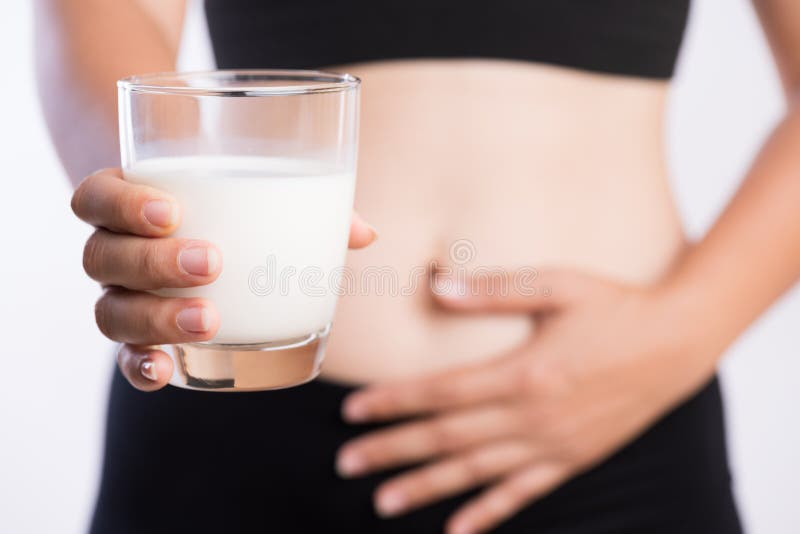


 In about 75% of the world’s population, the activity of this enzyme is reduced. after weaning (primary hypolactasia or lactase inconsistency), which leads to incomplete digestion of lactose and malabsorption of lactose in adulthood (1). Secondary forms of lactose malabsorption can be caused by inflammation or functional loss of the intestinal mucosa, such as celiac disease, infectious enteritis, or Crohn’s disease. Very rarely, lactase deficiency is congenital due to an autosomal recessive genetic disorder that interferes with the expression of lactase at birth (2).While some people with lactose malabsorption have no symptoms, most people who do not consume lactose have symptoms such as abdominal pain, bloating, excessive flatulence, or diarrhea. Lactose intolerance refers to a syndrome of one or more symptoms occurring after the consumption of foods containing lactose (3). Currently, the origin of the symptoms of lactose intolerance is not well understood.
In about 75% of the world’s population, the activity of this enzyme is reduced. after weaning (primary hypolactasia or lactase inconsistency), which leads to incomplete digestion of lactose and malabsorption of lactose in adulthood (1). Secondary forms of lactose malabsorption can be caused by inflammation or functional loss of the intestinal mucosa, such as celiac disease, infectious enteritis, or Crohn’s disease. Very rarely, lactase deficiency is congenital due to an autosomal recessive genetic disorder that interferes with the expression of lactase at birth (2).While some people with lactose malabsorption have no symptoms, most people who do not consume lactose have symptoms such as abdominal pain, bloating, excessive flatulence, or diarrhea. Lactose intolerance refers to a syndrome of one or more symptoms occurring after the consumption of foods containing lactose (3). Currently, the origin of the symptoms of lactose intolerance is not well understood. lactose intolerance (4). In a study by Vonk et al. (2003), patients with lactose intolerance with severe symptoms (diarrhea) and intolerance of subjects with mild symptoms (no diarrhea) did not differ in the degree of digestion of lactose in the small intestine, which indicates a similar activity of lactase and leads them to the hypothesis of a “factor of resistance of the large intestines “(5). It has been suggested that the processing of poorly digested lactose in the colon may play a role in the symptoms experienced by lactose intolerant patients.When lactose is poorly absorbed and into the colon, it is rapidly fermented by the resident microbiota into various metabolites, including lactate, formate, succinate, and short-chain fatty acids (SCFA, acetate, propionate, butyrate), as well as gases (h3, CO2, and Ch5 ). When incubated stool samples from lactose intolerant and lactose intolerant subjects, samples from lactose intolerant subjects showed higher rates of production of D- and L-lactate, acetate, propionate, and butyrate compared to tolerant subjects (6).
lactose intolerance (4). In a study by Vonk et al. (2003), patients with lactose intolerance with severe symptoms (diarrhea) and intolerance of subjects with mild symptoms (no diarrhea) did not differ in the degree of digestion of lactose in the small intestine, which indicates a similar activity of lactase and leads them to the hypothesis of a “factor of resistance of the large intestines “(5). It has been suggested that the processing of poorly digested lactose in the colon may play a role in the symptoms experienced by lactose intolerant patients.When lactose is poorly absorbed and into the colon, it is rapidly fermented by the resident microbiota into various metabolites, including lactate, formate, succinate, and short-chain fatty acids (SCFA, acetate, propionate, butyrate), as well as gases (h3, CO2, and Ch5 ). When incubated stool samples from lactose intolerant and lactose intolerant subjects, samples from lactose intolerant subjects showed higher rates of production of D- and L-lactate, acetate, propionate, and butyrate compared to tolerant subjects (6). Although the colon is thought to have a high capacity to absorb SCFA, it has been suggested that temporary accumulation of these metabolites due to the rapid fermentation of poorly digested lactose may be the cause of abdominal pain, excess flatulence, and bloating (7; 8). Possible mechanisms proposed to explain how SCFA can cause symptoms, including an increase in osmotic load causing fluid into the colon lumen, changes in colon motility, and colon hypersensitivity (9-11).However, the calculated amount of fluid drawn into the colon is unlikely to cause symptoms, given the high water absorption capacity of the colon and the effects of SCFA on colon motility and colon sensitivity have only been observed in rats and not in humans.
Although the colon is thought to have a high capacity to absorb SCFA, it has been suggested that temporary accumulation of these metabolites due to the rapid fermentation of poorly digested lactose may be the cause of abdominal pain, excess flatulence, and bloating (7; 8). Possible mechanisms proposed to explain how SCFA can cause symptoms, including an increase in osmotic load causing fluid into the colon lumen, changes in colon motility, and colon hypersensitivity (9-11).However, the calculated amount of fluid drawn into the colon is unlikely to cause symptoms, given the high water absorption capacity of the colon and the effects of SCFA on colon motility and colon sensitivity have only been observed in rats and not in humans. These metabolites can inhibit bacterial growth and affect eukaryotic cells. cell (12). In our previous studies, in which we linked colon fermentation patterns to cytotoxicity parameters, we identified compounds such as propionic acid, medium chain fatty acids, 1-octanol, and heptanal as more abundant in the most cytotoxic samples (13), supporting the Campbell hypothesis et al. Therefore, it seems necessary to include not only SCFA but also other metabolites when investigating the pathogenesis of lactose intolerance.
These metabolites can inhibit bacterial growth and affect eukaryotic cells. cell (12). In our previous studies, in which we linked colon fermentation patterns to cytotoxicity parameters, we identified compounds such as propionic acid, medium chain fatty acids, 1-octanol, and heptanal as more abundant in the most cytotoxic samples (13), supporting the Campbell hypothesis et al. Therefore, it seems necessary to include not only SCFA but also other metabolites when investigating the pathogenesis of lactose intolerance.